 |
|
|
|
|
|
| Republic of Rome Incorporating the Ferrentani & Latins 509 - 28 BC Fresh from expelling theEtruscan king of Rome, the rebellious nobles set up a republic. This was not a unique event in the ancient world. Several Greek cities had done the same, and a similar wave of revolts and changes from kingship to republic subsequently gripped the Etruscan city states in the fifth and fourth centuries. However, expelling Etruscan kings did not remove Etruscan influence overnight. A large number of the nobles had strong Etruscan links which would take another couple of generations to fade. In Rome, two consuls were elected each year to govern (with some breaks) alongside the Senate, over which they presided. Dictators (Latin for 'one who dictates' or gives orders) - also known as the praetor maximus, the supreme praetor, or magister populi, master of the people - were elected to temporary office (usually a six month term) during periods of emergency. The first two consuls were Lucius Junius Brutus, leader of the anti-Etruscan rebellion, and Tarquinius Collatinus (both Etruscans). Roman dating often used 'anno urbe condita' (AUC), meaning 'in the year of the city', with AUC 1 being the traditional founding of Rome in 753 BC. Another way of dating events was to link them to the names of the two current consuls. Mentioned by Livy in connection with events in 319 BC, the Ferrentani (or Ferentani) are otherwise unknown. It is generally thought that they are in fact the Frentani, theSamnites' Sabellian neighbours on the Adriatic coast. However, during this period the Romans would not have dared post their forces far away from Latium or provoke the Samnites by placing armed forces along their eastern borders. Instead, the Ferrentani must be the Forentani, placed by Pliny in Campania and Latium, much closer to Rome. |
|
|
 |
|
|
| (Information by Peter Kessler, with additional information by Edward Dawson, from Magistrates of the Roman Republic, T R S Broughton, from The Roman History: From Romulus and the Foundation of Rome to the Reign of the Emperor Tiberius, Velleius Paterculus, J C Yardley, & Anthony A Barrett, from The History of Rome, Volume 1, Titus Livius, translated by Rev Canon Roberts, from Samnium and the Samnites, E T Salmon, from the Encyclopaedia Britannica, from Continuity and Innovation in Religion in the Roman West, R Haeussler, Anthony C King & Phil Andrews, from Liber Prodigiorum, Julius Obsequens, from Periocha, Livy, from Res Gestae, Ammianus Marcellinus, from Valerius Maximus, Pseudo-Quintilian, and Paulus Orosius, from Epitome of Roman History, Florus, from Historia Romana, Cassius Dio, from Flavius Eutropius, from Strategemata, Frontinius, from 'Breviary', Sextus Festus, from St Jerome Emiliani (Hieronymus), from Getica, Jordanes, from The Getae in Southern Dobruja in the Period of the Roman Domination: Archaeological Aspects, S Torbatov, and from External Links: Perseus Digital Library, and The Works of Julius Caesar: Gallic Wars, and Polybius, Histories, and the Encyclopædia Britannica, and The Natural History, Pliny the Elder (John Bostock, Ed), and Journal of Celtic Studies in Eastern Europe and Asia-Minor, and Archaeologists study submerged Nabataean temple (Heritage Daily).) |
|
|
| 509 - 507 BC |
The former Etruscan king of Rome, Lucius Tarquinius Superbus, attempts several times to regain control of the city. In 507 BC he enlists the help of Lars Porsena, ruler of Etruscan Clevsin. Lars Porsena attacks Rome and probably captures it (although the Roman version of events paints a more flattering picture from their point of view, with Porsena saluting their brave defenders and withdrawing without completing his attempt). Porsena's occupation is brief, perhaps ending after a peace treaty is signed. 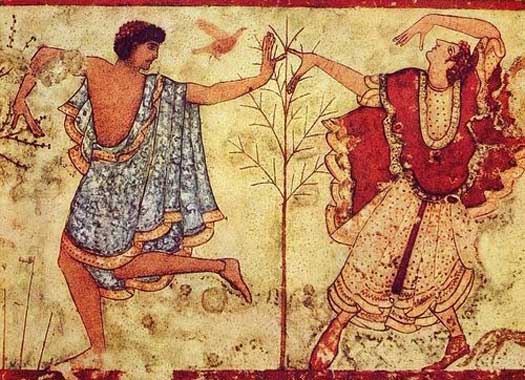 Early Etruscan civilisation was heavily influenced by the Phoenicians and Greeks and, in turn, it influenced early Roman (Latin) culture Early Etruscan civilisation was heavily influenced by the Phoenicians and Greeks and, in turn, it influenced early Roman (Latin) culture |
|
| With the ending of Etruscan rule, the states of the Latin League fail to unify, instead vying with each other for dominance. The balance of power shifts often between Rome and other influential cities such as Alba Longa and Lavinium. |
|
|
| 505 - 504 BC |
Again it is Livy who records fresh conflict between the Sabini and the new republic of Rome. Again the Sabini come off second best (in 505 BC), and the two Roman consuls of this year celebrate a triumph in Rome. The following year, Lucius Tarquinius Superbus is appointed dictator of the Sabini, who play a leading part in the fresh conflict which erupts. The Fidenates (of the former Etruscan town of Fidenae) and Camerians (of the settlements Cameria) are brought in to assist them. The allied army marches on Rome and is stopped at the River Teverone (Latin Anio, modern Aniene). A planned night attack by the Sabini is leaked to the Romans, and turns into a Sabini massacre. Tarquinius manages to escape but his campaign (and presumably his dictatorship of the Sabini) comes to an end. 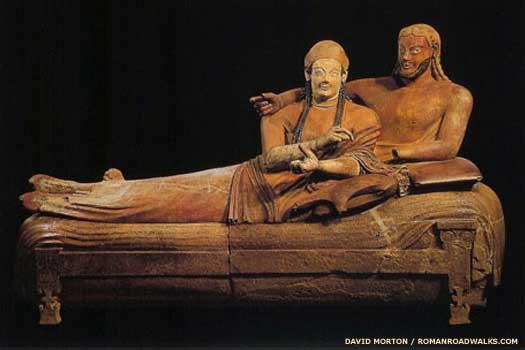 An Etruscan sarcophagus of a man and his wife from the city of Caisra (modern Cerveteri), which was one of the older cities, having been formed in the late ninth century BC by a melding together of clusters of Villanovan villages An Etruscan sarcophagus of a man and his wife from the city of Caisra (modern Cerveteri), which was one of the older cities, having been formed in the late ninth century BC by a melding together of clusters of Villanovan villages |
|
| 503 BC |
Livy describes how the Latin colonies of Cora and Pometia rebel against Rome's domination of the region. In their fight the colonies unite with the Aurunci. Rome sends two armies against them and a hard-fought battle results in defeat for the rebels, with a high number of casualties. Few prisoners are taken, it seems, and even those are butchered in a blood-thirsty rampage by the Roman troops. The rebels retire to Pometia, followed by the Roman armies who besiege them. An Aurunci sally forces the Romans to withdraw with losses, but they return, take the town, behead the Aurunci officers, sell the Pometians into slavery, level the buildings, and sell off the land. |
|
| 501 BC |
Titus Lartius Flavus |
Dictator. Member of an Etruscan family. |
| 501 BC |
Titus Lartius commands forces against the thirty Latin cities which have sworn to reinstate Lucius Tarquinius Superbus as the king of Rome. Aruns of the Etruscan city of Clevsin may be the Aruns Tarquinius who is a son of Lucius Tarquinius Priscus, and the brother of Lucius Tarquinius. This Aruns is the subject of a plot involving his brother and his wife, Tullia, daughter of Servius Tullius, former king of Rome. They conspire to murder Lucius' wife (another Tullia who is also a daughter of Servius Tullius) and Aruns himself so that they can marry each other. 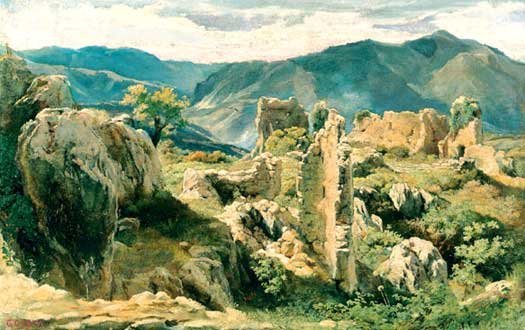 A romantic view of the ruins of Alba Longa, following its destruction by Rome under Tullus Hostilius in the seventh century BC A romantic view of the ruins of Alba Longa, following its destruction by Rome under Tullus Hostilius in the seventh century BC |
|
| 501 BC |
Manius Valerius |
Dictator. |
| 498 BC |
Aulus Postumius Albus Regillensis |
Dictator. |
| 496 - 493 BC |
The various political intrigues and schemes of the Latin states turn to war when Lavinium breaks its alliance with Rome in an attempt to secure power. Members of the Latin League unite with Lavinium and Tusculum and move against Rome. At the battle of Lake Regillus, Rome claims the victory over the combined might of her neighbours, and the result proves Rome's capacity to stand alone against all-comers. The war draws to a close in 493 BC with the Latin League claiming independence from Rome. The Treaty of Cassius ensures this independence but places Rome on what is virtually a status equal with all of the other members of the Latin League combined. 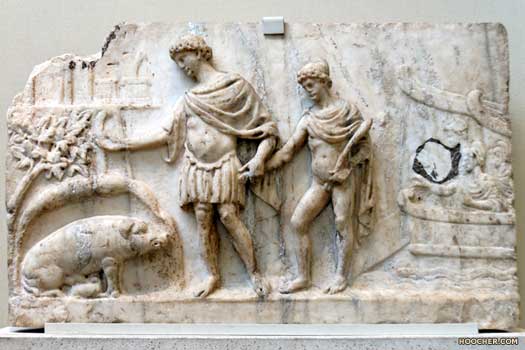 This second century AD relief in Rome depicts Aeneas landing in Latium, although such a migration myth was a much later addition to the history of the Latins than their true migration as Indo-Europeans This second century AD relief in Rome depicts Aeneas landing in Latium, although such a migration myth was a much later addition to the history of the Latins than their true migration as Indo-Europeans |
|
| 495 BC |
The Aurunci field an army in support of the Volsci against Rome. While on the march, they send envoys ahead to demand that Rome withdraws from Volsci territory. The reply is a consular army under Publius Servilus Priscus Structus which meets them at Arricia and ends the war in a single, victorious battle. The Aurunci, or Opici, are thoroughly put down. |
|
| 494 BC |
Manius Valerius Maximus |
Dictator for the second time. |
| 492 BC |
Thanks to his defeat of the Volsci town of Corioli, the Roman patrician Gneus Marcius is given the cognomen Coriolanus. Promoted to general, he attempts to abolish the office of plebeian tribune in Rome, which he believes is responsible for a grain shortage. The tribunes fight back with false charges of misappropriation of public funds, and he is forced into exile. Coriolanus seeks shelter with the Volsci and eventually leads an army against Rome. Town after town is captured along the way and Rome looks set to fall, until Coriolanus' mother and wife are sent to placate him. He relents and retires, but having now committed acts of disloyalty towards both Rome and the Volsci, he is soon tried and then conveniently assassinated. 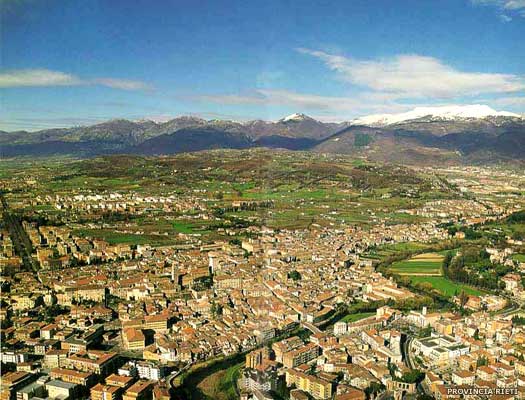 The Sabini (Hernici) settlement of Reate (modern Rieti) was founded by the Sabini and prospered under Roman control to survive into the modern age The Sabini (Hernici) settlement of Reate (modern Rieti) was founded by the Sabini and prospered under Roman control to survive into the modern age |
|
| 486 BC |
The Hernici have become highly adapted to Latin culture and customs. Under pressure from the Aequi and Volsci, they join the mutual protection treaty between the Romans and Latins. The armies defending Latium now consist of Romans, Latins and Hernici. As time passes and the alliance grows more essential to survival, the Hernici are absorbed into Latin culture and largely vanish as a separately identifiable people. |
|
| 477 BC |
As a close neighbour of Rome, the powerful Etruscan city of Veii is seen as a serious rival and even a threat to its existence. A long-running series of wars results, starting in this year. Despite having major Etruscan connections, the Fabian Gens, one of the most powerful familial groups in Rome, builds a defensive post on land between the two cities which they own but which is subject to heavy cattle raiding by both sides. Veii attacks the post which is held by the semi-private army of the Fabii. The resultant Battle of the Cremora sees three hundred Fabii killed and the area abandoned to the Veiians. Veii now controls the entire west bank of the Tiber, including the Janiculum Hill which overlooks Rome. Less than a year later, Veii's navy is crushed off the coast of Cumae and the city is forced to agree a treaty with Rome. |
|
| 463 BC |
Gaius Aemilius Mamercus? |
Possibly not a dictator, but an interrex. |
| 458 BC |
Lucius Quinctius Cincinnatus |
Dictator for 16 days to rescue Minucius' trapped army. |
| 444 BC |
For an unspecific period of time, Rome replaces its two civilian consuls with three military officers with consular powers, known as the tribuni militum consularii potestate. Two other magistrates, the censors, are instituted with a term of office lasting eighteen months in order to examine the property rolls of citizens and determine who has the privilege and responsibility of providing military service. Military service is not an option for men of little or no property. 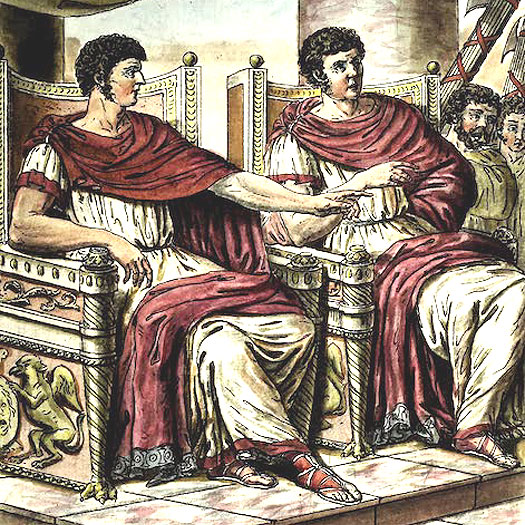 Rome's republic was usually headed by two consuls and the Senate, but on a very few occasions the post was replaced, usually by military appointments Rome's republic was usually headed by two consuls and the Senate, but on a very few occasions the post was replaced, usually by military appointments |
|
| 439 BC |
Lucius Quinctius Cincinnatus |
Dictator. Called a second time from his farm to defend Rome. |
| 437 BC |
Mamercus Aemilius Mamercinus |
Dictator. |
| 435 BC |
Quintus Servilius Priscus Fidenas |
Dictator. |
| 434 BC |
Mamercus Aemilius Mamercinus |
Dictator for the second time. |
| 431 BC |
The Volsci control much of southern Latium (Cora, Velitrae, Satricum, and Antium), and they continue to pressure the Latins. In addition, the Aequi are said to reach Rome itself, and a decisive battle between the Latins and the Volsci appears to be fought in this year. The Romans, under the command of Aulus Postumius Tubertus, again meet the Aequi at the Algidus Pass, but this time they are victorious. With this victory the Romans are able to open an aggressive offensive which the Volsci are unable to withstand forever. |
|
| 431 BC |
Aulus Postumius Tubertus |
Dictator. Defeated the Aequi. |
| 428 BC |
Rome fights the Etruscan city of Veii again, possibly resulting in the loss to the Etruscans of Fidemae (either at this point or in 406 BC). 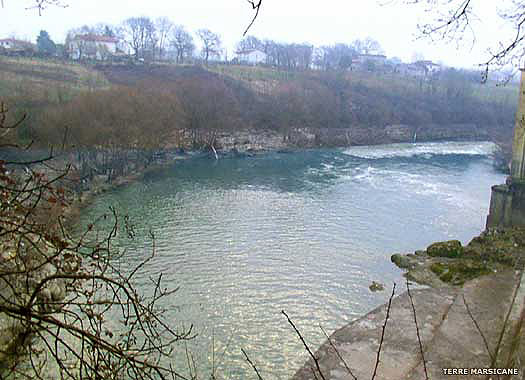 The ancient River Liris (now divided into the Liri and the Gari) along its upper length was an early home to the Volsci, and later formed Rome's border with the Samnites The ancient River Liris (now divided into the Liri and the Gari) along its upper length was an early home to the Volsci, and later formed Rome's border with the Samnites |
|
| 426 BC |
Mamercus Aemilius Mamercinus |
Dictator for the third time. |
| 418 BC |
Quintus Servilius Priscus Fidenas |
Dictator for the second time. |
| 408 BC |
Publius Cornelius Rutilus Cossus |
Dictator. |
| 396 BC |
Marcus Furius Camillus |
Dictator. |
| 396 BC |
After a ten year siege, the once-dominant Etruscan city of Veii is conquered by its former subject city, Rome, under the command of Marcus Furius Camillus. (More recent views tend to lean towards a six year siege, with the ten year claim being made in order to draw parallels with the fall of Troy.) With Veii's fall, a key southern defence is lost, leaving the Etruscans under pressure from all sides by several different forces. The city is later rebuilt as a Roman colony. |
|
| 391 - 376 BC |
For the second time in its republican history, Rome's consuls are again replaced by military tribunes, this time very shortly before the city comes under attack from the Celts. 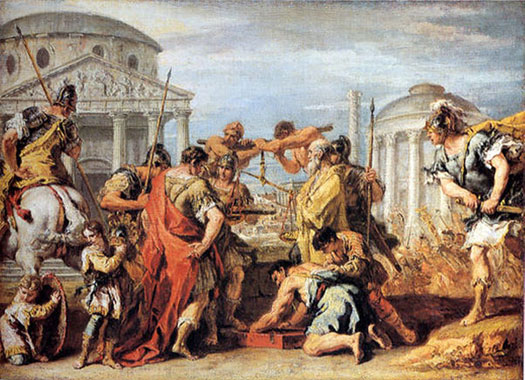 Dictator Marcus Furius Camillus may have been instrumental in persuading Brennus and his Gauls to leave Rome following its sacking in 389 BC, as painted around 1716-1720 Dictator Marcus Furius Camillus may have been instrumental in persuading Brennus and his Gauls to leave Rome following its sacking in 389 BC, as painted around 1716-1720 |
|
| 390 BC |
Marcus Furius Camillus |
Dictator for the second time. |
| 389 BC |
Marcus Furius Camillus |
Dictator for the third time. |
| 389 BC |
Brennus and his band of Senones Celts sack Rome, with only the Capitoline Hill standing out against them. The citizens of Rome are forced to pay a thousand pounds in gold to buy off the Celts (a pretty low sum by Roman standards, which perhaps outrages them more than the city being sacked in the first place). Rome afterwards takes steps to ensure the city is never again placed in such a position. |
|
| 385 BC |
Aulus Cornelius Cossus |
Dictator. |
| 380 BC |
Titus Quinctius Cincinnatus Capitolinus |
Dictator. |
| 377 BC |
By the 390s the Romans and Latins had regained control of the plains of Latium and relegated the Aequi and Volsci to the western highlands. The Volsci are finally defeated with the capture of the port of Antium in 377 BC, and the defeated Aequi are doomed to be destroyed within the century. |
|
| 370 - 367 BC |
For the third time Rome replaces its consuls with military tribunes. The reason may lie with the continuing - and menacing in Rome's eyes - presence of large numbers of Celts in northern Italy. 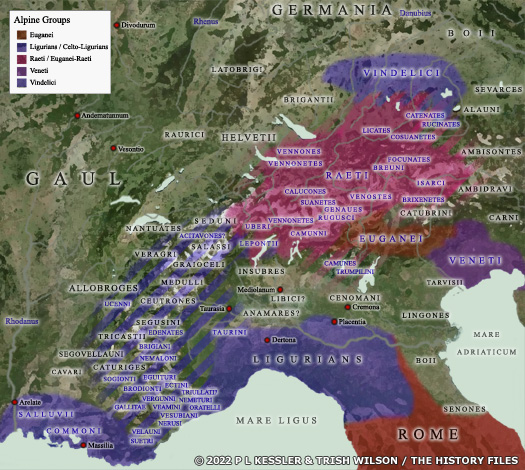 The origins of the Euganei, Ligurians, Raeti, Veneti, and Vindelici are confused and unclear, but in the last half of the first millennium BC they were gradually being Celticised or were combining multiple influences to create hybrid tribes (click or tap on map to view full sized) The origins of the Euganei, Ligurians, Raeti, Veneti, and Vindelici are confused and unclear, but in the last half of the first millennium BC they were gradually being Celticised or were combining multiple influences to create hybrid tribes (click or tap on map to view full sized) |
|
| 368 BC |
Marcus Furius Camillus |
Dictator for the fourth time. |
| 368 BC |
Publius Manlius Capitolinus |
Dictator. |
| 367 BC |
Marcus Furius Camillus |
Dictator for the fifth time. |
| 363 BC |
Lucius Manlius Capitolinus Imperiosus |
Dictator. |
| 362 BC |
Appius Claudius Crassus Inregillensis |
Dictator. |
| 361 BC |
T Q Poenus Capitolinus Crispinus |
Dictator. (Tiberius Quinctius.) |
| 360 BC |
Quintus Servilius Ahala |
Dictator. |
| 358 BC |
Gaius Sulpicius Peticus |
Dictator. |
| 356 BC |
Gaius Marcius Rutilus |
Dictator. |
| 354 BC |
The Samnites agree a treaty with Rome, the first concrete historical record of their existence. It sets their border along the River Liris (now divided into the Liri and the Gari, with the one meeting the other shortly before the latter flows into the Tyrrhenian Sea at the Garigliano), and may in part be a joint defensive pact against Celtic incursions from the north. 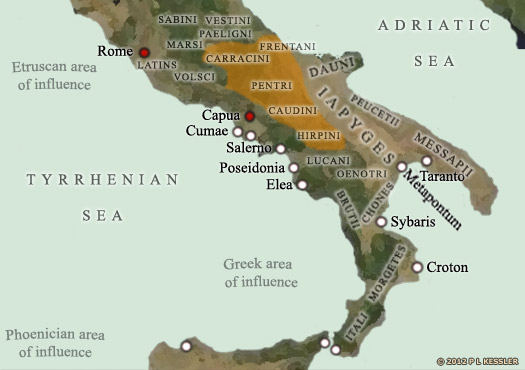 The orange area shows the general territory under the control of the Samnites, while the location of each of their divisions, along with the Frentani, is shown within that territory (click or tap on map to view full sized) The orange area shows the general territory under the control of the Samnites, while the location of each of their divisions, along with the Frentani, is shown within that territory (click or tap on map to view full sized) |
|
| 353 BC |
Titus Manlius Imperiosus Torquatus |
Dictator. |
| c.353 BC |
The Etruscan city of Caisra at last becomes impatient of the increasing domination by Rome and protests or rebels. However, their gesture is brought to order, and they are deprived of their coastland territory (in favour of Roman colonists) by the terms of a hundred-year treaty or truce. The city's independence is at an end, although Roman nobles are still sent to Caisra to study the Etruscan language and literature, and perhaps to learn Greek as well. |
|
| 352 BC |
Gaius Julius Iullus |
Dictator. |
| 351 BC |
Marcus Fabius Ambustus |
Dictator. |
| 351 BC |
A truce which lasts for forty years is agreed between Rome and the Etruscan city of Tarquinii. |
|
| 350 BC |
Lucius Furius Camillus |
Dictator. |
| 349 BC |
Titus Manlius Imperiosus Torquatus |
Dictator for the second time. |
| c.346 - 345 BC |
As the final act in the revolt of the Volsci, Rome sacks and levels their town of Satricum around 346 BC. The surviving fighting men, who number about four thousand, are sold into slavery. The Aurunci choose this moment to send a force against Rome itself which causes panic, with the Senate viewing the threat as a wider conspiracy of the Latin League. Lucius Furius Camillus is selected as dictator for the second time. He pulls together an emergency army from Rome's citizens and ends the threat at the very first battle against the Aurunci. The same army is then used to complete the conquest of the Volsci at Sora. 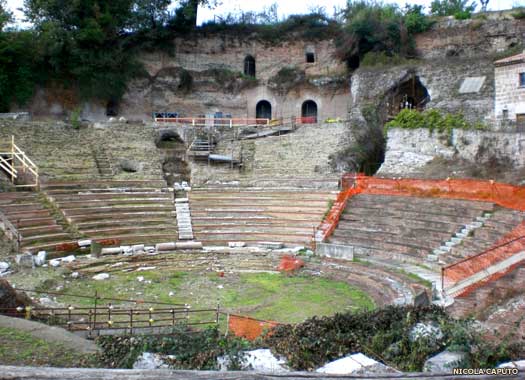 The Roman city of Teanum, modern Teano, thrived during the late Roman republic and empire periods after being founded as the main centre of the Sidicini tribe The Roman city of Teanum, modern Teano, thrived during the late Roman republic and empire periods after being founded as the main centre of the Sidicini tribe |
|
| 345 BC |
Lucius Furius Camillus |
Dictator for the second time. Defeated the Aurunci and Volsci. |
| 344 BC |
Publius Valerius Publicola |
Dictator. |
| 343 - 341 BC |
The Samnites are continuing to expand into former Etruscan Campania following their capture of Capua and Cuma. Their advances force the Greek city states along the coast to request of Rome that it reins in its ally. The Samnites also launch an apparently unprovoked attack against the Sidicini. When the Samnites refuse to listen to Roman 'reason', Rome triggers the First Samnite War. Roman Consul Cornelius attacks the Samnite town of Saticula (on the border of the modern region of Campania), and also captures the Greek colony of Dicaearchia. The war ends with Rome distracted by the Latin War against its other Italic allies. At the bargaining table, the Samnites agree to restore the former Roman-Samnite alliance on condition that the Samnites are permitted to go to war against the Sidicini if required. As Rome has no agreement with the Sidicini, the terms are accepted.  The Opici probably dominated much of Campania to start with, but were pushed out of the eastern parts by the Samnites, dominated themselves by the Etruscans, and then defeated by Rome The Opici probably dominated much of Campania to start with, but were pushed out of the eastern parts by the Samnites, dominated themselves by the Etruscans, and then defeated by Rome |
|
| 342 BC |
Marcus Valerius Corvus |
Dictator. |
| 340 BC |
Lucius Papirius Crassus |
Dictator. |
| 340 - 338 BC |
The Latin War is the last major attempt by the Latins to retain independence from Rome. As its trigger, the Samnites attack the Sidicini who, in their desperation, offer to subjugate themselves to Rome. They are refused on the grounds that they are too late in seeking Rome's protection following the conclusion of the First Samnite War. Instead, the beleaguered Sidicini ally themselves to a Latin League force which is advancing against the Samnites. Encouraged by Rome's indifference to the Latin-Samnite conflict, the Latins (and the Volsci) plan to attack Rome next. Rome hears of this and, following failed bargaining in the Senate with ten Latin chiefs to agree a new treaty, declares war against the Latin League. Allied to the Samnites, Rome fights for two years to defeat the Latins in a number of battles and subjugate them fully. The Latin League is dissolved, and some Latin states are annexed directly to Rome, while others retain autonomy. 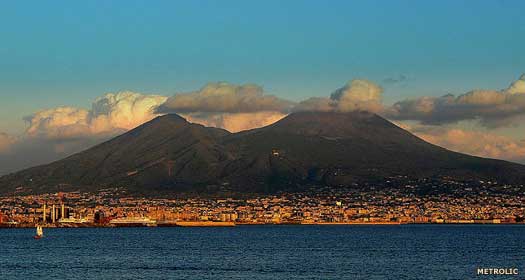 Modern Naples lies beneath the slumbering volcano of Vesuvius, one of a long line of settlements there which have risked an eruption and which have sometimes been destroyed by one Modern Naples lies beneath the slumbering volcano of Vesuvius, one of a long line of settlements there which have risked an eruption and which have sometimes been destroyed by one |
|
| 339 BC |
Quintus Publilius Philo |
Non-military dictator who carried out reforms. |
| 337 - 335 BC |
Having signed separate treaties with Rome, the Aurunci and Sidicini now fall out. Livy relates that the Sidicini attack the Aurunci in 337 BC. The Ausones side with the Sidicini and, in 335 BC, Rome sends an army under Marcus Valerius Corvus to besiege Cales, the Ausones capital. Corvus captures the town while its defenders are in a drunken sleep and a Roman garrison is placed there. Colonists soon follow, and land is distributed amongst them, effectively destroying the Ausones. |
|
| 335 BC |
Lucius Aemilius Mamercinus Privernas |
Dictator. |
| c.334 BC |
The Sidicini now bear the brunt of Rome's attentions. In a campaign by both consular armies, the Sidicini apparently accept subjugation without a battle, while the Romans are struck by an unexplained plague (probably malaria, which is prevalent in the region). The details are not mentioned at all by Livy, which is unusual if this people have been conquered in battle. |
|
| 334 - 331 BC |
At the request of the embattled [Greek](GreeceMacedonia.htm#Great Kings) colony of Taras, Alexander I Molossus embarks with a force of Epirotes, Macedonians and Tarantines to Italy. He fights the Brutii and Lucani, and in 332 BC defeats an alliance of Lucani and Samnites near Paestum. In the same year he concludes a treaty with the Romans and continues battling against the other Italic peoples. He captures Heraclea from the Lucani and then Sipontum and Terina from the Brutii but, having been forced to accept battle at Pandosia (in Calabria), he is killed by a Lucani exile. 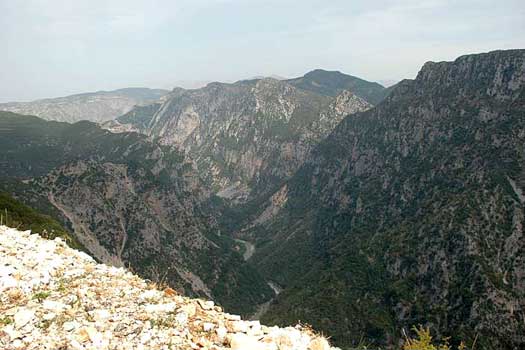 The mountainous landscape of all but coastal Epirus required a hardy inhabitant, and the region's remoteness may have had a bearing on its poorly recorded history in the ancient world The mountainous landscape of all but coastal Epirus required a hardy inhabitant, and the region's remoteness may have had a bearing on its poorly recorded history in the ancient world |
|
| The defeat is a significant one as it marks the end of any new Greek colonisation in Italy and teaches the Italians how to defeat the phalanx, which is completely outmanoeuvred on rocky ground by the fast-moving Italics. The Greeks, though, are looking eastwards as Alexander the Great of Macedonia destroys and takes over the Achaemenid empire. |
|
|
| 333 BC |
Publius Cornelius Rufinus |
Dictator. |
| 332 BC |
Marcus Papirius Crassus |
Dictator. |
| 331 BC |
Gnaeus Quinctius Capitolinus |
Dictator. |
| 325 BC |
Lucius Papirius Cursor |
Dictator. |
| 325 - 304 BC |
At around the same time as the former Peucetii settlement of Gravina is taken from Greek settlers by the Samnites, the Second Samnite War is triggered against Rome. During this period the Marsi ally themselves to the Romans in an attempt to remove the Samnite hold over them, while the Dauni, Iapyges, Lucani, Messapii, and Peucetii side with the Samnites. The Oenotri and Chones also appear to be subject to Samnite control by this time, during which the Samnite commander, Gaius Pontius, leads a force of around 9,000, including a thousand cavalry, with which he wins several early victories. |
|
| 324 BC |
Lucius Papirius Cursor |
Dictator for the second time. |
| 322 BC |
Aulus Cornelius Cossus Arvina |
Dictator. |
| 321 BC |
Meddix Gaius Pontius (a meddix being a Samnite consul or magistrate) commands the Samnite forces at the Battle of the Caudine Forks. Not actually a battle, the event (near Benevento) sees the Romans fooled into entering a trap in a mountainous defile, where they are cornered by the Samnites. They are forced to agree terms so that they can return home and the terms of the agreement are maintained until 316 BC. 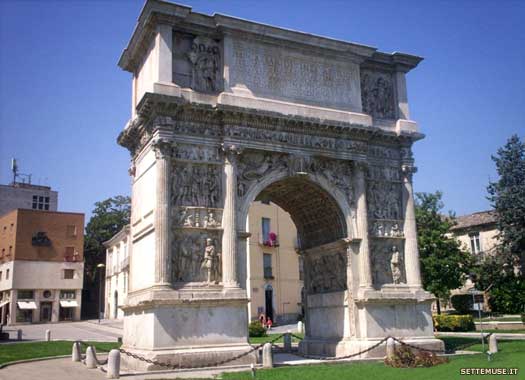 The Arch of Trajan, built in AD 114 by the Senate and people of Rome, marked the entrance of the Via Traiana into the city of Beneventum (Benavento) The Arch of Trajan, built in AD 114 by the Senate and people of Rome, marked the entrance of the Via Traiana into the city of Beneventum (Benavento) |
|
| 320 BC |
Gaius Maenius |
Dictator. |
| 320 BC |
Lucius Cornelius Lentulus? |
Dictator. |
| 320 BC |
The Samnite commander, Gaius Pontius, defeats the army of Dictator Lucius Cornelius Lentulus and captures the towns of Canusium and Gnaitha, but the Samnites suffer defeat at the hands of Quintus Fabius Maximus Rullianus at Imbrinium. |
|
| 320 BC |
Titus Manlius Imperiosus Torquatus |
Dictator for the third time. |
| 319 BC |
The Ferrentani (more properly known as the Forentani) are subjugated by Rome when they reconquer Satricum. This event may instead belong to 315 BC, when Quintus Aulius Cerretanus is master of the horse rather than 319 BC when he is consul. |
|
| 316 BC |
Lucius Aemilius Mamercinus Privernas |
Dictator for the second time. |
| 315 BC |
Quintus Fabius Maximus Rullianus |
Dictator. |
| 315 BC |
Rome strikes back under Dictator Quintus Fabius Maximus Rullianus when he successfully besieges Saticula. He is less successful when he fights the Samnites at the Battle of Lautulae, during which his inexperienced levies are no match for seasoned Samnite warriors. The southern reaches of Latium are captured and the second class Roman citizens there are persuaded to abandon their allegiance to Rome. 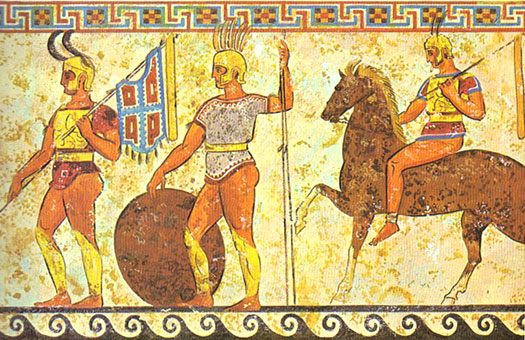 Roman military tactics may have owed something to the Samnites, with this efficient and seasoned warrior force matching the Romans and bettering them in the fourth century BC Roman military tactics may have owed something to the Samnites, with this efficient and seasoned warrior force matching the Romans and bettering them in the fourth century BC |
|
| The Samnites advance on Rome itself and, although it is successfully defended, the Samnites storm through the weakened Roman lines of the Liris Valley and capture Sora. The lines of communication to Apulia are cut and the Samnites enjoy the high watermark of their superiority. |
|
|
| 315 BC |
Quintus Fabius Maximus Rullianus |
Dictator for the second time. |
| 314 BC |
Gaius Maenius |
Dictator for the second time. |
| 313 BC |
Gaius Poetelius Libo Visolus |
Dictator. |
| 313 BC |
Quintus Fabius Maximus Rullianus |
Dictator for the third time. |
| c.313 BC |
The Romans have been learning from Samnite fighting methods and begin to turn the tables. Meddix Gaius Pontius is captured and executed by Quintus Fabius Maximus Rullianus, probably during the latter's third and last dictatorship. |
|
| 312 BC |
Gaius Sulpicius Longus? |
Dictator. |
| 312 BC |
Gaius Junius Bubulcus Brutus |
Possibly a magister equitum rather than a dictator. |
| 310 BC |
Lucius Papirius Cursor |
Dictator for the third time. |
| 310 BC |
Etruscans allied to the Samnites fight Rome at the Battle of Sutrium (modern Sutri). The Roman forces are commanded by the now-Consul Quintus Fabius Maximus Rullianus. After winning the battle on this key route into Etruscan territory, he pursues the Etruscans into the ancient Ciminian Forest, which divides Latium from Etruria, where he defeats them again. The Etruscan cities of Curtun and Perusna fall to Rome in the same period, and the first Roman contact with the Umbri to the north-east takes place. 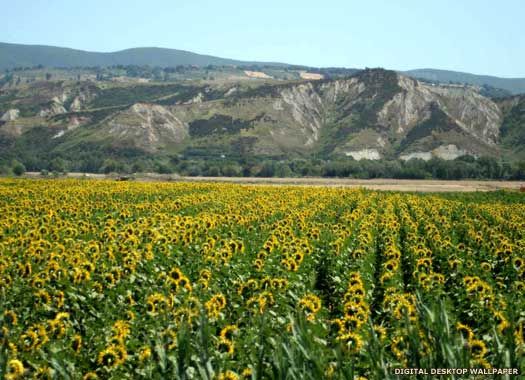 The territory which had been settled by the Umbri was focussed along a stretch of the mountainous Apennines which form a spine down the middle of Italy The territory which had been settled by the Umbri was focussed along a stretch of the mountainous Apennines which form a spine down the middle of Italy |
|
| 309 BC |
Lucius Papirius Cursor |
Dictator for the fourth time. |
| 308 BC |
The Etruscan city state of Tarchna capitulates to Rome in what can be seen as a period of expansion and superiority for the latter city. |
|
| 306 BC |
Publius Cornelius Scipio Barbatus |
Dictator. |
| 304 BC |
The Samnites are defeated by Rome, ending the Second Samnite War. Their confederates, the Frentani, Marsi, Marrucini, and Paeligni, voluntarily accept their reintegration into Roman administrative rule. All the other Samnite allies are also subjugated by Rome. |
|
| 302 BC |
Gaius Junius Bubulcus Brutus |
Dictator for the second time. |
| 302 BC |
Marcus Valerius Corvus |
Dictator for the second time. |
| 301 BC |
Marcus Valerius Corvus |
Dictator for the third time. |
| 301 BC |
The Etruscan city of Arret- has been suffering civil turmoil in this century, possibly a result of Roman pressure on Etruscan lives and freedoms. In this year the plebeians revolt against the important and powerful Cilnii family. A Roman army under Marcus Valerius Maximus arrives to help to restore order, and within twenty years or so, the city submits entirely to Rome. 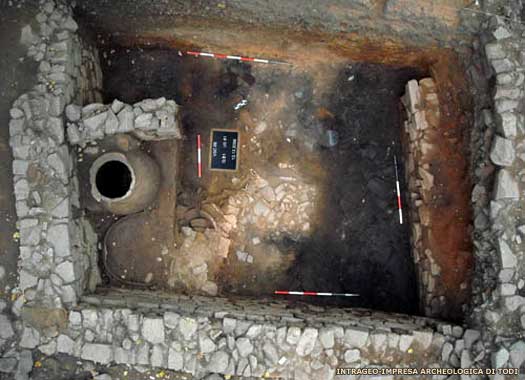 This Etruscan villa was excavated at the town of Vetluna (near modern Grosseto in Tuscany), and seems to have belonged to a wealthy family at a time of peace with Rome, in the third century BC This Etruscan villa was excavated at the town of Vetluna (near modern Grosseto in Tuscany), and seems to have belonged to a wealthy family at a time of peace with Rome, in the third century BC |
|
| 299 BC |
Latin colonies are founded in Umbrian territory by Rome in the next half a century, starting in 299 BC with the conquest of the city of Nequinum, which Rome renames Narni. Rome also concludes a treaty with the Picentes, or what Livy later terms the Picentine people. |
|
| 298 BC |
General Scipio defeats the forces of the Etruscan city of Velathri, and the city itself is severely damaged in the process. It now becomes a Roman possession and later provides military aid and supplies to Rome during the Second Punic War. The Picentes warn the Roman senate that they have been approached by the Samnites, who are seeking allies in advance of a renewal of hostilities against Rome. The Third Samnite War begins with Consul Quintus Fabius Maximus Rullianus immediately defeating the Samnites at Tifernum after managing to encircle their forces. |
|
| 297 - 295 BC |
The Samnites march into Etruria in 297 BC to rouse the Etruscans and form a coalition against Rome. The combined armies of consuls Lucius Volumnius Flamma Violens and Appius Claudius Caecus (dictator in 292 BC) defeat this force and the Samnites withdraw back into their own territory. In 295 BC, Quintus Fabius Maximus Rullianus, Roman consul for a fifth time, wins lasting fame after he defeats a fresh coalition of Gauls and Samnites at the Battle of Sentinum (near the modern town of Sassoferrato). 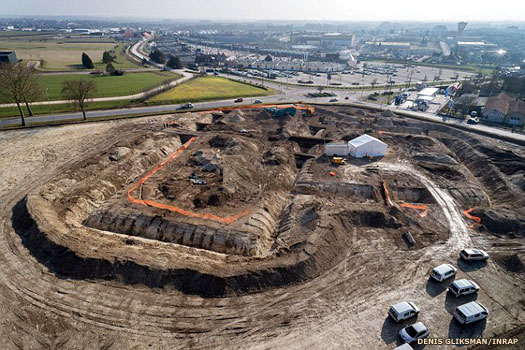 An Iron Age Celtic prince lay buried with his chariot at the centre of this huge mound in the Champagne region of France, according to the country's National Archaeological Research Institute An Iron Age Celtic prince lay buried with his chariot at the centre of this huge mound in the Champagne region of France, according to the country's National Archaeological Research Institute |
|
| 294 BC |
Lucius Postumius Megellus defeats the Etruscans of Volsinies. The city of Rosella, close to Vetluna, is occupied by Rome, much to Vetluna's detriment, and the latter city begins to decline. The irrigation systems begin to decay, the drainage systems silt up, and the area slowly reverts to malaria-infested swamp. The Romans attempt to establish a garrison nearby, at Graviscae, but fever kills off its inhabitants. |
|
| 293 - 290 BC |
The Samnites are defeated by Rome at the Battle of Aquilona in 293 BC. The nearby capital of the Samnite confederation, Aquilona (in modern Campania), is destroyed. The former Pentri capital of Bovianum resumes the role, although the Samnites are gradually broken, accepting final defeat in 290 BC. |
|
| 292 - 285 BC |
Appius Claudius Caecus |
Dictator. Victor against the Samnites in 297 BC. |
| 291 - 285 BC |
Marcus Aemilius Barbula |
Dictator. |
| 291 - 285 BC |
Publius Cornelius Rufinus? |
Dictator. |
| 291 BC |
The Etruscan city state of Clevsin falls to Rome during its seemingly relentless advance into Etruscan lands. |
|
| 287 BC |
Quintus Hortensius |
Dictator. |
| 283 BC |
The Picentes make another appearance in the historical record, in relation to successful Roman conquests in the far northern reaches of Picene territory. The Ager Gallicus on the north-east coast of Italy has been populated by different ethnic groups for quite some time. These are mainly Picentes and Etruscans, but with a strong admixture of more recently arrived Gauls. Ancona had been built by the Greeks of Sicily, but to the north of this the Gauls dominate. 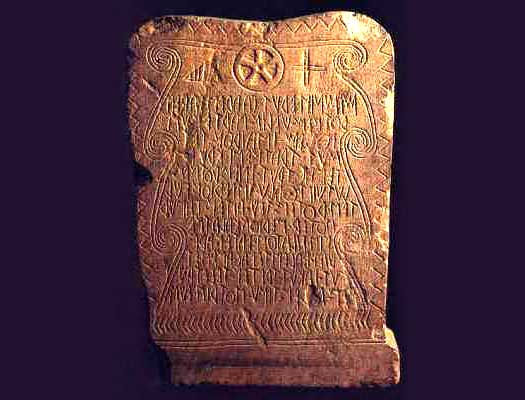 The Novilara Stele, the only one of four which can be attested fully by modern archaeology, remains a mystery, its language still undeciphered The Novilara Stele, the only one of four which can be attested fully by modern archaeology, remains a mystery, its language still undeciphered |
|
| Rome has been winning a series of victories against these Gauls, and in this year it expels the tribe of the Senones from the coastal region. Rome annexes this strip as far south as Ancona, and the area is renamed Gallia Togata. |
|
|
| 282 - 278 BC |
The growing power of Rome has defeated the Boii in the north and saved the Greek colony of Thurii from being overwhelmed by the Italics, but the colony of Tarentum intervenes, sinking some of the Roman ships. Rome declares war on Tarentum, but Pyrrhus of Epirus declares for Tarentum, as do many of the southern Italic peoples, including the Brutii, Lucani, and Samnites. A few years later these three Italic tribes send auxiliaries to the army of Pyrrhus, while Rome has its own loyal Frentani auxiliaries (or, more probably, the subject Ferrentani of Campania). Following the withdrawal of Pyrrhus in 278 BC to conquer Syracuse, the Italics face Rome's might alone. |
|
| 280 BC |
Gnaeus Domitius Ahenobarbus |
Dictator. |
| 280 BC |
In what is becoming a predictable feature of this period of Rome's history, the Etruscan city state of Vulci falls to it. |
|
| 278 - 272 BC |
In six years of further campaigning in southern Italy, Generals Gaius Fabricius Luscinus and Lucius Papirius inflict defeat after defeat on the Italic tribes which had supported Pyrrhus until they are subdued (by 272 BC). They are forced to concede half of the forest of Sila, which is a valuable source of timber, in exchange for peace. 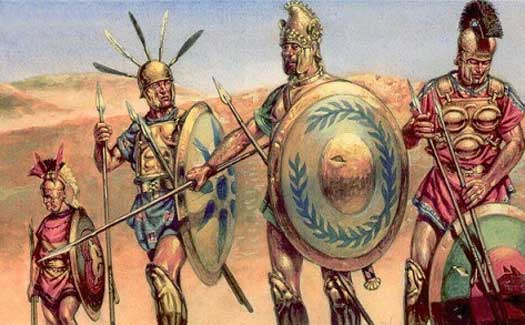 Numerius prepares his Samnites to face Rome at the Battle of Bovianum in 272 BC, close to the Pentri capital of the same name Numerius prepares his Samnites to face Rome at the Battle of Bovianum in 272 BC, close to the Pentri capital of the same name |
|
| 277 - 275 BC |
Pyrrhus of Epirus conquers Syracuse in 277 BC, and holds it for two years, with support being given by the Messapii. His hard but costly fighting against Rome on the island brings his southern Balkans kingdom a brief sense of importance. It is also his costly victories which inspire the term 'pyrrhic victory', as a victory with such high loses is no real victory at all. |
|
| 273 BC |
In a development which seems to have taken quite some time since their first conquests, the Romans now found their first colony in Etruscan territory. |
|
| 268/267 BC |
The Picentes appear to rebel against Roman domination. They are defeated by two consular armies in Gallia Togata and Rome gains the region around Arimnus (Rimini), on the border region between the Picentes and the Etruscans. This former Etruscan city is captured by Publius Sempronius Sophus. He returns to Rome and is given a triumph for his victory over the Picentes. 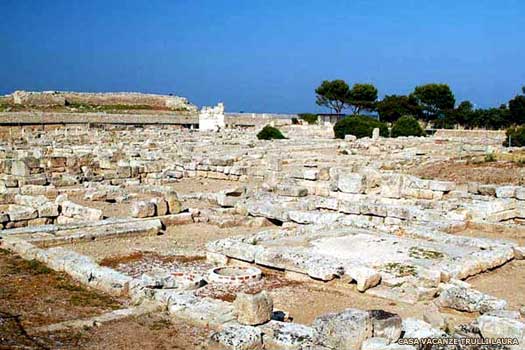 The settlement of Gnapia near the modern town of Fasano in Apulia, southern Italy, became an important border town under the Messapii, with their Peucetii neighbours to the north The settlement of Gnapia near the modern town of Fasano in Apulia, southern Italy, became an important border town under the Messapii, with their Peucetii neighbours to the north |
|
| 267/266 BC |
Perhaps spurred on by the recent Messapii support of Epirus, Rome attacks and conquers the Messapii and the former Greek settlement of Brandusium (modern Brindisi). |
|
| 265 - 264 BC |
Velzna, the last independent Etruscan city, is suffering civil strife, so the Romans are called upon by the city's aristocrats to help calm the situation in their favour. Roman troops take a very heavy-handed approach, plundering around two thousand bronzes from all over the city. Their loot is often melted down to provide bronze coin for the war chest. The following year, the city is razed to the ground by the Romans, and the fortunate survivors are forced to resettle, leaving the city's ruins abandoned (it is likely that the modern city of Orvieto has been built directly over those ruins). The Romans interpret the city's name as Volsinii, and the resettled populace now occupy a fresh site which is named Volsinii Novae (modern Bolsena). 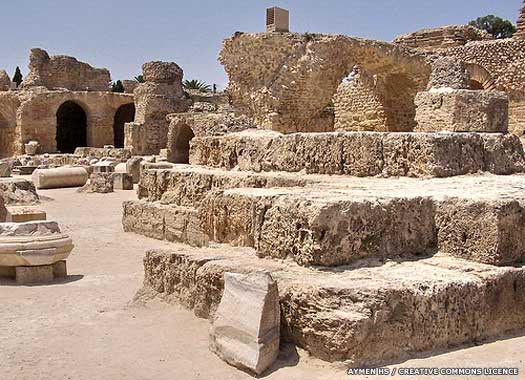 The city of Carthage existed in its original glory for at least four hundred and twenty-eight years before it was destroyed by the Romans - and possibly another two centuries before that as a developing colony which was founded by Phoenicians The city of Carthage existed in its original glory for at least four hundred and twenty-eight years before it was destroyed by the Romans - and possibly another two centuries before that as a developing colony which was founded by Phoenicians |
|
| 264 - 241 BC |
The First Punic War erupts between Rome and Carthage. It starts in Sicily and develops into a naval war in which the Romans learn how to fight at sea and eventually gain overall victory. Before that, however, they are dealt a humiliating defeat in 249 BC at the port of Drepana. Following the war's conclusion, Carthage loses Sardinia and the western section of Sicily. |
|
| 263 BC |
Gnaeus Fulvius Maximus Centumalus |
Dictator. |
| 257 BC |
Quintus Ogulnius Gallus |
Dictator. |
| 253 BC |
Seemingly contradicting the claim that Velzna had been the last independentEtruscan city in 265 BC, the Etruscan city state of Caisra is now subjugated by Rome. |
|
| 249 BC |
Marcus Claudius Glicia |
Dictator. |
| 249 BC |
Aulus Atilius Caiatinus |
Dictator, following the disaster of Drepana in 249 BC. |
| 246 BC |
Tiberius Coruncanius |
Dictator. |
| 231 BC |
Gaius Duilius |
Dictator. |
| 231 - 225 BC |
The two most extensive Gallic tribes of northern Italy, the Boii and Insubres, send out the call for assistance against Rome to the tribes living around the Alps and on the Rhône. Rather than each of the tribes sending their own warriors, it appears that individual warriors are effectively hired from the entire Alpine region as mercenaries. Polybius calls them Gaesatae, describing it as a word which means 'serving for hire'. 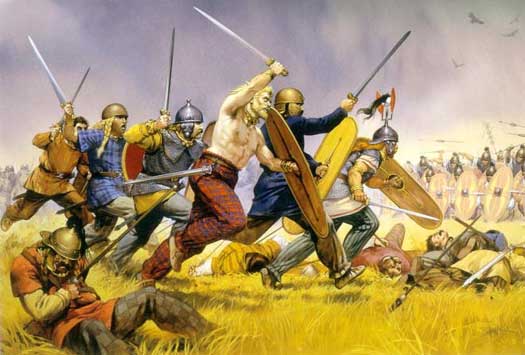 While most of the Gauls of the third century BC fought fully clothed, their Gaesatae mercenaries tended to fight with nothing more than their weapons, and not even the trousers shown here While most of the Gauls of the third century BC fought fully clothed, their Gaesatae mercenaries tended to fight with nothing more than their weapons, and not even the trousers shown here |
|
| The Gaesatae are offered a large sum of gold on the spot and the wealth of Rome is also pointed out - wealth which can be theirs if they stick to their task. Rome has been informed of what is coming, and hurries to assemble the legions. Even its ongoing conflicts with the Carthaginians take second place, and a treaty is hurriedly agreed with Hasdrubaal, commander in Iberia, which virtually confirms Carthaginian rule there. Another Roman force is in Illyria in 229 BC, fighting the Ardiaei, but that also returns by 228 BC, perhaps for this reason. Such is Rome's haste that they approach the Gaulish frontier before the Gauls have even stirred. It is 225 BC when the Gaesatae forces cross the Alps and enter the valley of the Padus with a formidable army. Defending Rome and its territories are the Ferrentani, Iapygians, Latins, Lucanians, Marrucini, Marsi, Messapians, Samnites, and Vestini, plus two more legions on Sicily and in Tarentum. The first battle witnesses Roman forces being decimated and routed by superior Gaulish tactics. Two fresh Roman armies arrive and the Gauls are caught between them. The battle is fierce, and large numbers of Gauls are cut down or taken prisoner. |
|
|
| 224 BC |
Lucius Caecilius Metellus |
Dictator. |
| 224 - 222 BC |
Rome continues the Gallic War against the Gauls of northern Italy, but in far less spectacular fashion than in 225 BC. With many of the tribes already pacified, only the Boii and Insubres remain to offer any real resistance, and this is quickly put down. In 222 BC, the Insubres are left with no option but to surrender, their unnamed chief making a complete submission to Rome. This act effectively ends the Gallic War in northern Italy, as Rome now dominates all of the tribes there. 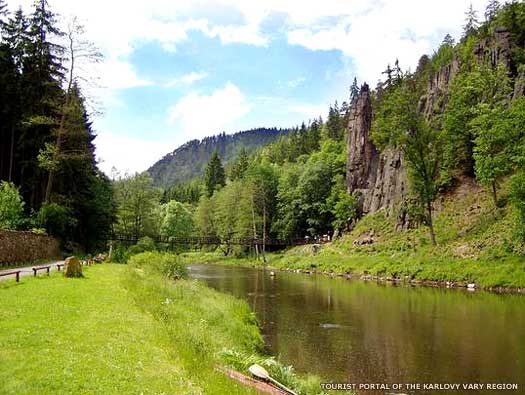 The landscape of Bohemia (main homeland of the Boii) is and was defined by wooded mountainsides and extensive farming land - a green and fertile area at the centre of Europe The landscape of Bohemia (main homeland of the Boii) is and was defined by wooded mountainsides and extensive farming land - a green and fertile area at the centre of Europe |
|
| 221 - 219 BC |
Q Fabius Maximus Verrucosus |
Dictator. |
| 218 - 202 BC |
The Second Punic War is fought against Carthage. Rome is aided by its Etruscan, Frentani, Picene, and Umbrian forces, but Italy is invaded by Hannibal Barca after the general forces his way through the Alps, fighting off the attentions of the Celtic Allobroges tribe and some Ligurian tribes along the way. |
|
| 217 BC |
Q Fabius Maximus Verrucosus |
Dictator. Nicknamed Cunctator (the Delayer) for his tactics. |
| 217 BC |
Marcus Minucius Rufus |
Dictator. |
| 216 BC |
Marcus Junius Pera |
Dictator. |
| 216 BC |
Marcus Fabius Buteo |
Dictator. |
| 216 - 209 BC |
As part of the Second Punic War, a Roman army is massacred at the Battle of Cannae in 216 BC, killing 60,000. The Hirpini now declare for Carthage. The final stages of the war in Italy are fought out in the south-east. |
|
| 213 BC |
Gaius Claudius Centho |
Dictator. |
| 210 BC |
Quintus Fulvius Flaccus |
Dictator. |
| 209 - 202 BC |
When the Carthaginians finally withdraw in 209 BC, Rome is able to capture the ports of Brundisium (modern Brindisi) and Tarentum (modern Taranto). This establishes full Roman dominion over the south-east of Italy and the tribes of the Dauni, Hirpini, Iapyges, Lucani, Messapii, and Peucetii. Rome also finds time to conquer the Greek colony of Syracuse and fight the First Macedonian War in an attempt to tie down possible Macedonian reinforcements for Carthage. 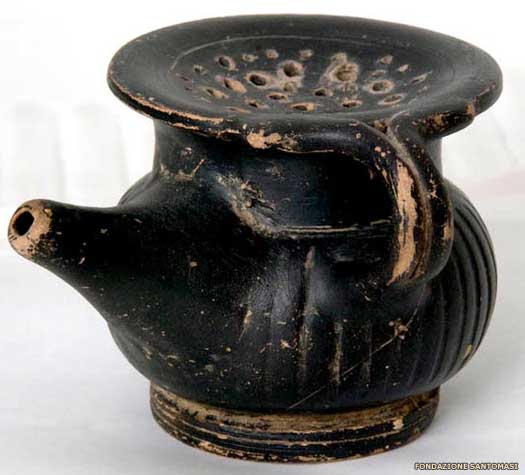 Early Dauni pottery developed a style which was mostly its own, generally using geometric shapes, although the example shown here is a plain one, albeit still simplistically attractive Early Dauni pottery developed a style which was mostly its own, generally using geometric shapes, although the example shown here is a plain one, albeit still simplistically attractive |
|
| 208 BC |
Titus Manlius Torquatus |
Dictator. |
| 207 BC |
Marcus Livius Salinator |
Dictator. |
| 205 BC |
Quintus Caecilius Metellus |
Dictator. |
| 203 BC |
Publius Sulpicius Galba Maximus |
Dictator. |
| 202 BC |
Gaius Servilius Geminus |
Dictator. Last of the irregular holders of this office. |
| 202 BC |
At the end of the Second Punic War the post of dictator is outlawed. It is replaced by powers for the two consuls which allows them to take any action to defend the republic. |
|
| 200 - 196 BC |
Rome fights the Second Macedonian War, thanks to claims made by Pergamon and Rhodes of a treaty between Macedonia and the Seleucid empire which is designed to carve up Egypt's possessions. The republic launches an attack and, after a spell of indecisive conflict, Philip of Macedonia is defeated at the Battle of Cynoscephalae in 197 BC, while his general, Androsthenes, is defeated near Corinth. The Macedonian army is drastically reduced in size as a result of the defeat, and Philip's standing as an important Greek king is greatly diminished. 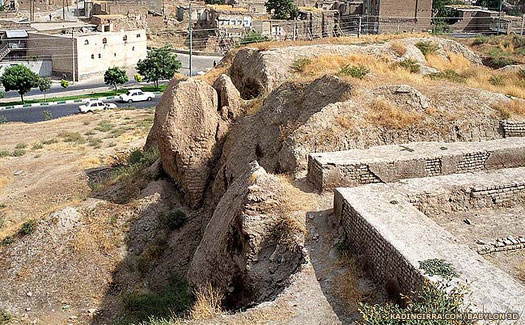 Ecbatana was the capital of Media, a prized possession of the Seleucid empire and one which had to be regained upon the event of a revolt - this view shows the surviving ancient walls in modern Hamadan in Iran Ecbatana was the capital of Media, a prized possession of the Seleucid empire and one which had to be regained upon the event of a revolt - this view shows the surviving ancient walls in modern Hamadan in Iran |
|
| 200 BC |
As Rome tightens its grip over central Italy, the Etruscan city of Caisra is drawn directly under its control. |
|
| 190 - 188 BC |
Rome defeats the Seleucids in the Seleucid War, taking Asia Minor as a province in 188 BC. The Seleucid ally, Cappadocia, negotiates friendly terms with Rome, notably because Stratonice, the king's daughter, is about to marry the king of Pergamon, a Roman ally. Pergamon also annexes Lydia and Pamphylia around this point in time. The newly appointed commander of Roman forces in Asia Minor is Gnaeus Manlius Vulso. He ensures that the entire region knows about Rome's arrival by looting, robbing, and extorting plunder from the local population, and destroying those who resist (so says Livy). Even worse, he views the Galatian Celts as a mongrel race and is determined to exterminate them, despite receiving no such instructions from Rome. He exhibits an extreme degree of the general Roman dislike of Celts due to their sack of Rome under Brennus of the Senones in 387 BC.  The origins of the Euganei, Ligurians, Raeti, Veneti, and Vindelici are confused and unclear, but in the last half of the first millennium BC they were gradually being Celticised or were combining multiple influences to create hybrid tribes (click or tap on map to view full sized) The origins of the Euganei, Ligurians, Raeti, Veneti, and Vindelici are confused and unclear, but in the last half of the first millennium BC they were gradually being Celticised or were combining multiple influences to create hybrid tribes (click or tap on map to view full sized) |
|
| 181 - 151 BC |
The Celtiberian wars between these dates comprise two serious phases of fighting. The First Celtiberian War between 181-179 BC sees the Celtiberians push back against the Roman presence in formerly-Carthaginian territories at the conclusion of the Second Punic War. The Second Celtiberian War between 154-151 BC occurs when Rome declares war on the Belli, and relies on Consul Marcus Claudius Marcellus to deliver victory. |
|
| 172 - 168 BC |
Perseus of Macedonia and Rome renew fighting in the Third Macedonian War. Epirus is split, with the Chaonians and Thesprotians siding with Rome and the Molossians allying themselves to Macedonia. The result is a disaster for Epirus, with the Chaonians being annexed by Rome in 170 BC. |
|
| 168 - 150 BC |
Roman rule of Macedonia and [Thrace](GreeceThrace.htm#Odrysian Restored) follows the defeat of Perseus. The Antigonids are removed from power and the kingdom is dismantled and replaced by four republics. In 150 BC, Andriscus of Macedon breaks the Roman hold over the former kingdom when he leads a popular uprising in the Fourth Macedonian War. 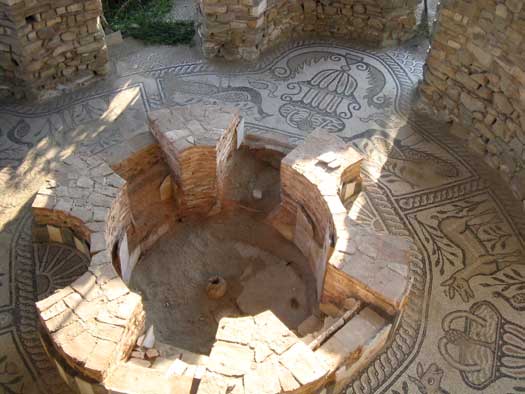 The Roman Forum at modern Stobi is now in North Macedonia (known for some time as the Former Yugoslav Republic of Macedonia (FYROM)) The Roman Forum at modern Stobi is now in North Macedonia (known for some time as the Former Yugoslav Republic of Macedonia (FYROM)) |
|
| 159 BC |
Rome conquers the Greek kingdom of Epirus, with thousands of its inhabitants being enslaved and the region being plundered so thoroughly that it takes centuries to recover. Epirus remains within the later Roman empire and its subsequent eastern division for the next seven hundred and fifty years or so. |
|
| 149 - 148 BC |
Andriscus invades Macedonia from [Thrace](GreeceThrace.htm#Odrysian Restored) in 149 BC and defeats the Roman praetor, Publius Juventius. Then he proclaims himself King Philip VI of Macedonia. In the following year, his popular uprising is put down by the legions at the Second Battle of Pydna, and they establish a permanent residence in Greece. The Achaean League of Greek states rises up against this presence and is swiftly destroyed. Rome also destroys Corinth as an object lesson and annexes Greece and Macedonia. |
|
| 149 - 146 BC |
Carthage has recovered from its defeat in 202 BC and refuses a change in terms by Rome, and the Third Punic War is the result. After a siege which conquers Carthage, Rome takes brutal action to obliterate the city and its people. |
|
| 146 BC |
The Achaean League is dissolved by Rome and the four client republics of the north are dissolved. Macedonia officially becomes the Roman province of Macedonia, which also includes Epirus, Thessaly, and areas of Illyria, Paeonia, and [Thrace](GreeceThrace.htm#Odrysian Restored). 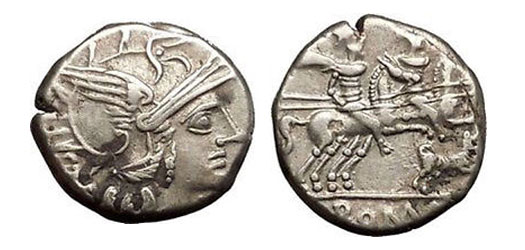 Pictured here are both sides of a Roman silver dinarius from the official mint, dated to around 146 BC - the mounted attacker on the reverse accompanied by his dog is fairly typical as Roman troops would often bring their mastiffs along with them so that, while the soldier was fighting the enemy above with spear and long knife, their dogs would be biting the enemy's legs from below Pictured here are both sides of a Roman silver dinarius from the official mint, dated to around 146 BC - the mounted attacker on the reverse accompanied by his dog is fairly typical as Roman troops would often bring their mastiffs along with them so that, while the soldier was fighting the enemy above with spear and long knife, their dogs would be biting the enemy's legs from below |
|
| 133 - 129 BC |
Rome is bequeathed the Anatolian kingdom of Pergamon, but has to send two armies in 131 BC and 129 BC to secure the claim. The first is defeated and its commander, Proconsul Publius Licinius Crassus Dives Mucianus, is killed along with his ally, King Ariarathes V of Cappadocia. |
|
| 123 - 121 BC |
The Allobroges come into direct conflict with Rome following the latter's defeat of the Salluvii. That tribe's king, Tuto-Motulus, flees northwards and seeks shelter with the Allobroges. They welcome him in and, when Rome demands that he is handed over, they refuse. Having declared war, Rome sends Quintus Fabius Maximus to attack them in 121 BC. He is the son of Quintus Fabius Maximus Aemilianus, consul of 145 BC, and is consul himself during this year. He campaigns in Gallia Transalpina (the modern Auvergne and Rhône-Alpes regions) with Gnaeus Domitius Ahenobarbus, fighting the Allobroges, Arverni, and Helvii. They are defeated and the consul is awarded the honour of a triumph which is famous for its spectacle, with the Arverni ruler, Bituitus, being displayed in his silver battle armour. The Ruteni, Segovellauni, Vocontii, and Volcae Arecomisci are subjugated at the same time. 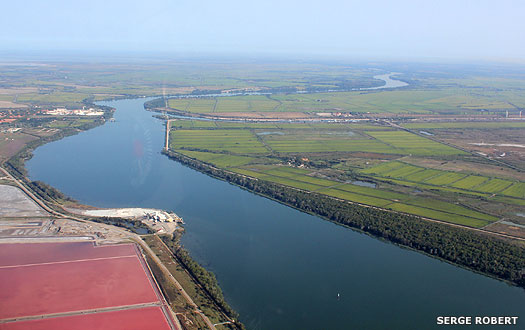 The Rhodanus (the modern River Rhône) formed the western border of the territory which belonged to the Salyes confederation by the time the Romans were able to note their existence The Rhodanus (the modern River Rhône) formed the western border of the territory which belonged to the Salyes confederation by the time the Romans were able to note their existence |
|
| 107 - 101 BC |
The Cimbric War is ignited when the semi-Germanic Cimbri and Teutones migrate into northern Italy. Initially the invaders are successful against tribes which are allied to Rome. Consul Lucius Cassius Longinus enters Gallia Narbonensis to oppose the Cimbri in 107 BC. However, he is killed at the Battle of Burdigala (modern day Bordeaux, the chief town of the Biturices Vivisci) by the Helvetii, along with his lieutenant, Lucius Piso (grandfather of Lucius Calpurnius Piso, father-in-law to Julius Caesar). The Roman force under Cassius is routed and made to 'pass under the yoke' by the Helvetii after surrendering most of its supplies. |
|
 In 105 BC a huge Roman army is destroyed at the Battle of Arausio. Consul Gaius Marius rebuilds the Roman forces, also employing numbers of Iberian Mercenaries (see feature link) and, while the Cimbri raid Iberia, in 102 BC the weakened Teutones are defeated and enslaved. The Cimbri are similarly destroyed at the Battle of Vercellae in 101 BC (potentially the home of the Libici Gauls). In 105 BC a huge Roman army is destroyed at the Battle of Arausio. Consul Gaius Marius rebuilds the Roman forces, also employing numbers of Iberian Mercenaries (see feature link) and, while the Cimbri raid Iberia, in 102 BC the weakened Teutones are defeated and enslaved. The Cimbri are similarly destroyed at the Battle of Vercellae in 101 BC (potentially the home of the Libici Gauls). |
|
|
| 96 - 75 BC |
Cyrene becomes part of the republic in 96 BC, and in 75 BC is made a province of Rome. Also in 96 BC (and not 92 BC as is sometimes stated), Rome and Parthia meet on the Euphrates. The Parthian ambassador, Orobazos, offers Sulla, the propraetor of the province of Cilicia, the 'friendship' and 'alliance' of his master. Although the exact outcome of this meeting is unclear, Parthia's agreements with [ China](../KingListsFarEast/ChinaNewDynasties01.htm#Han Dynasty) and Rome serve to prove its rise as a world power. 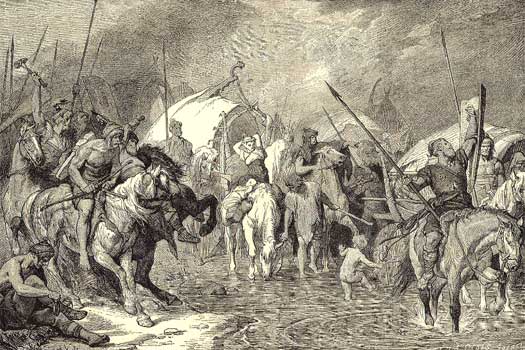 An illustration depicting the Teutones wandering in Gaul, part of a large-scale migration from modern Denmark into northern Italy in the second century BC An illustration depicting the Teutones wandering in Gaul, part of a large-scale migration from modern Denmark into northern Italy in the second century BC |
|
| 95 - 89 BC |
Rome secures the independence of Cappadocia in the face of attempted control by Pontus. Successful challenges to Rome's growing mastery of Anatolia are becoming increasingly rare. |
|
| 91 - 89 BC |
The Etruscans, Frentani, Hirpini, Iapyges, Lucani, Marrucini, Marsi, Paeligni, Picentes, Samnites, Umbri, and Vestini fight against Rome in the Social War (also variously known as the Italian War, or Marsic War). The Latins and Umbri play only a minor role in the war, joining the rebels late and agreeing terms with Rome early on. The Picentes side with Rome during the war and Picenum serves as a base for Roman troops. The war is the result of increasing inequality in Roman land ownership, and the spark for conflict is delivered by the assassination of the reforming Marcus Livius Drusus. The Alpine Euganei are conquered at the same time as the war ends in 89 BC while the Veneti gain Roman citizenship. |
|
| 89 - 82 BC |
Civil war explodes in Italy between the supporters and forces of Sulla and Gaius Marius. The latter is supported by the Etruscans. [Athens](GreeceAthensGreeks.htm#Elected Archons Roman) takes the opportunity to rebel against Roman control and Sulla is forced to crush the rebelling Greeks. He also conducts an ethnic cleansing campaign against the Samnites, Rome's most stubborn and persistent adversaries, forcing the remnant to disperse. The Italians are granted Roman citizenship and Sulla recaptures Rome in 82 BC to end the war. A new form of dictatorship is created in which there is no time limit for the office. |
|
| 82 - 79 BC |
Lucius Cornelius Sulla Felix |
Dictator. Resigned when Senate regained control of Rome. |
| 80 BC |
Sulla devastates the Etruscan cities; the Etruscans become Roman citizens but, as a result of their support of Gaius Marius, their language and customs are suppressed. 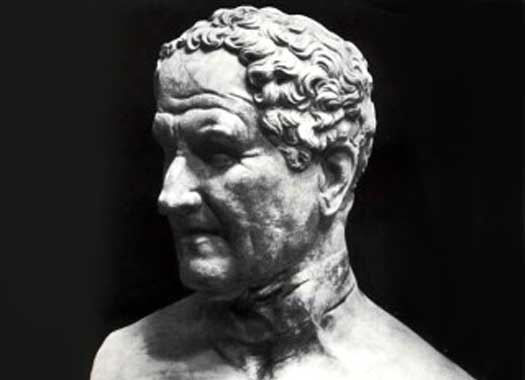 Lucius Cornelius Sulla was the victor in Rome's first full-scale civil war (88-82 BC), after which he became dictator of the Roman republic, thereby laying out a path which others could follow in the same century Lucius Cornelius Sulla was the victor in Rome's first full-scale civil war (88-82 BC), after which he became dictator of the Roman republic, thereby laying out a path which others could follow in the same century |
|
| 80 - 72 BC |
The Sertorian War in Iberia causes the Celts of Mediterranean Gaul to be subjected to troop levies and forced requisitions in order to support the military efforts of Metellus Pius, Pompeius, and other Roman commanders against the rebels. However, some Celtic polities, including, remarkably, the Helvii, support Sertorius and they pay the price for their support after his assassination. The Helvii and Volcae Arecomisci are forced to cede a portion of their territory to the Greek city state of Messalina. Caesar mentions this land forfeiture but does not provide any details of the Helvii actions against Rome. |
|
| 73 - 71 BC |
A slave named Spartacus, a former chieftain of the Maedi tribe of Thracians, leads a slave revolt in southern Italy. Aided by the Celts, Castus, Crixus, Gannicus, and Oenomaus, his numbers are swelled by more and more slaves joining his forces in what is known as the Third Servile War. 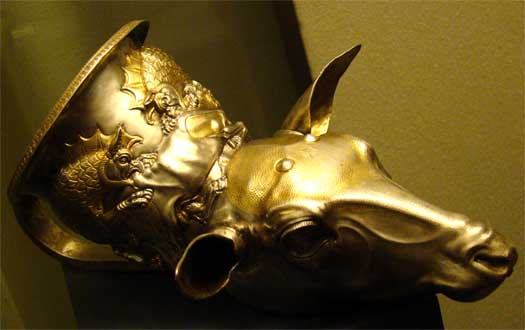 The treasures of the Odrysian kingdom in Thrace would in part have been inherited by the Odrissae The treasures of the Odrysian kingdom in Thrace would in part have been inherited by the Odrissae |
|
| Ultimately he is defeated by Crassus in battles at Brundisium, Lucania, and Silarus. Over six thousand slaves are crucified along the Via Appia (providing a memorable late scene in the 1960 film version of these events -Spartacus). Pompey gains the final victory over the remaining slave force and the credit in Rome, while Crassus is almost forgotten. |
|
|
| 68 - 63 BC |
Phoenicia becomes a Roman possession in 68 BC, while in 64 BC Lycia follows suit. In the following year, the Seleucids fall to Rome, and Syria and areas of the Levant (including Judea) become Roman provinces. |
|
| 65 BC |
The Allobroges revolt under the leadership of Catugnatus, and the Segovellauni may also be involved. The revolt is defeated in short order by Gaius Pomptinus at the Solonium and it results in a good deal of the tribe's accumulated wealth being paid to Rome. Senator Catiline (Lucius Sergius Catilina) invites the Allobroges to join his conspiracy. Instead, they decline the offer and expose it. This earns Rome's gratitude and the Allobroges remain allies thereafter. |
|
| 64 - 62 BC |
Pompey conquers Syria, including Ammon, making Syria a Roman province in 63 BC. The following year, Pompey's general, Scaurus, devastates the area around Petra but is unable to capture the city, partially because he has run out of supplies. The Nabataeans apparently buy their freedom by paying tribute so that, just as they had managed to avoid assimilation into the Seleucid empire, now they are keeping Rome at arm's length. 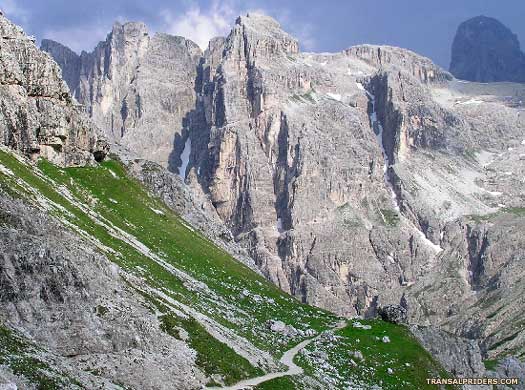 The Celtic tribes of the Western Alps were relatively small and fairly fragmented, but they made up for that with a level of belligerence and fighting ability which often stunned their major opponents, including the Romans The Celtic tribes of the Western Alps were relatively small and fairly fragmented, but they made up for that with a level of belligerence and fighting ability which often stunned their major opponents, including the Romans |
|
| 62 - 61 BC |
In response to Rome's incursions into the Danube delta, which are seen as a major threat by all the peoples of the region, King Burebista of the Getae has united all of the Getae into a single kingdom. He has also established overlordship of the neighbouring Bastarnae and Sarmatians. Burebista's powerful forces raid regularly into Roman-held territory. In 62 BC the Greek cities rebel against Roman rule, and in the following year the Bastarnae managed to isolate the Roman infantry of the inept proconsul of Macedonia, Gaius Antonius (uncle to Marc Antony). The entire force is massacred. The Roman hold over the region collapses. |
|
| 60 - 53 BC |
Caesar, Pompey, & Crassus |
Members of the first triumvirate. |
| 60 - 58 BC |
The Helvetii begin an invasion of the lowlands of Gaul, and Julius Caesar recruits two new legions to face the threat. The two sides soon face each other at the Battle of Bibracte in 58 BC, and the Helvetii are mercilessly crushed by six Roman legions. 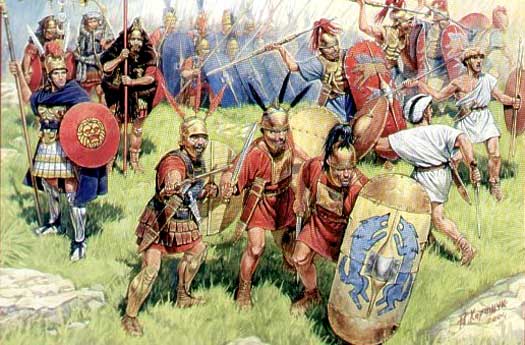 The Roman troops of Julius Caesar prepare to face the Helvetii and their allies (which probably include some Boii elements) at the Battle of Bibracte in 58 BC, outside the oppidum of the Aeduii tribe The Roman troops of Julius Caesar prepare to face the Helvetii and their allies (which probably include some Boii elements) at the Battle of Bibracte in 58 BC, outside the oppidum of the Aeduii tribe |
|
| Their shattered remnants are forced back to their homeland but deeper problems result from the campaign. Its mixed outcome, despite victory in battle, triggers Julius Caesar's campaigns in Gaul from this point onwards, which result in the eventual annexation of the entire land into the Roman state. |
|
|
| 58 BC |
The Gallic Wars of Julius Caesar begin when he becomes governor of Gaul. Over the course of the next decade or so he conquers all of the Gaulish tribes. His efforts begin with a showdown against Ariovistus of the Suevi at the Battle of Vosges. Superior Roman tactics breaks that line and the Suevi host makes a run for the Rhine. |
|
| 57 BC |
The Belgae enter into a confederacy against the Romans in fear of Rome's eventual domination over them. They are also spurred on by Gauls who are unwilling to see Germanic tribes remaining on Gaulish territory and are unhappy about Roman troops wintering in Gaul. Caesar marches ahead of expectations and the Remi, on the Belgic border, instantly surrender, although their brethren, the Suessiones remain enthusiastic about the venture. Rather than face such a large force with a reputation for uncommon bravery, Caesar elects to isolate them in groups using his cavalry. 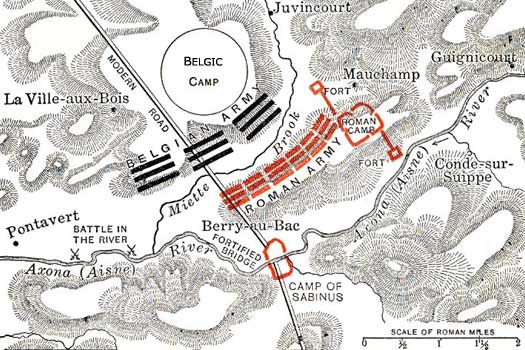 The Battle of the (River) Axona (the modern Aisne in north-eastern France) witnessed the beginning of the end of the Belgic confederation against Rome The Battle of the (River) Axona (the modern Aisne in north-eastern France) witnessed the beginning of the end of the Belgic confederation against Rome |
|
| The next day, Caesar leads his army into the territories of the Suessiones, to capture the town of Noviodunum. With this victory, the Suessiones surrender and Caesar marches on the surviving Bellovaci, who are soon subdued when their leaders in the confederacy against Rome flee to Britain. With this action, northern Gaul has been brought under Roman domination, while the victorious legions winter amongst the Andes, Carnutes, and Turones. |
|
|
| 56 BC |
Following his successful campaign against the Belgae in the previous year, Caesar heads for Italy. He sends Servius Galba ahead with the Twelfth Legion and part of the cavalry to secure the way. The pass through the Alps has been dominated by the Nantuates, Seduni, and Veragri tribes, making the route a dangerous one for Roman merchants, and now is the time to end that danger. With Gaul now apparently at peace, Caesar sets out for Illyricum. Once he has left, war flares up again, triggered by Publius Licinius Crassus and the Seventh Legion in the territory of the Andes thanks to their excessive scavenging activities. 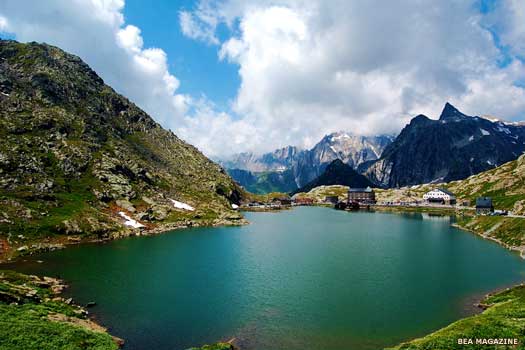 The region around the Great St Bernard's Pass was a perfect mix of fertile plains and protective high mountains for small but aggressive Celtic tribes in the four centuries or so between their settlement of the area and domination by Rome The region around the Great St Bernard's Pass was a perfect mix of fertile plains and protective high mountains for small but aggressive Celtic tribes in the four centuries or so between their settlement of the area and domination by Rome |
|
Julius Caesar rushes back to northern Gaul, to a fleet which is being prepared for him by the (Roman-led) Pictones and Santones on the River Loire. The subsequent campaign by Caesar against, principally, the Veneti is protracted and takes place both on land and sea, but Roman rule is firmly stamped upon the region. Entering Aquitania after subduing the Petrocorii along the way, Crassus recruits auxiliaries from the Gaulish regions of Tolosa, Carcaso, and Narbo (which includes the tribes of the Bebryces, Sordones, and Volcae) before entering the territory of the Sotiates. The Romans are only just victorious here, but then tackle the Vocates and Tarusates in another close-run battle. When news of this defeat spreads, the majority of the tribes of Aquitania surrender to Crassus. Now only the Morini and Menapii remain in opposition to Rome, never having sent their ambassadors to agree peace terms. Caesar leads his army to their territory but they withdraw into the forests and marshes, having realised that head-on conflict will be fruitless. 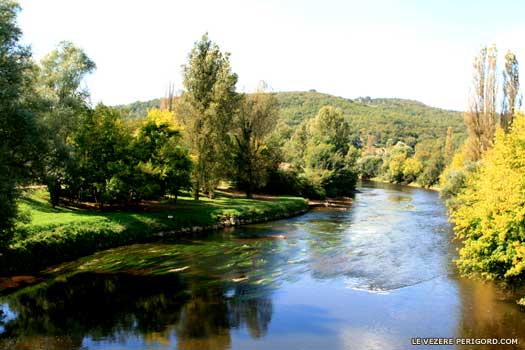 The River Vézère in France probably formed one of the territorial borders of the Petrocorii tribe following their arrival in the region The River Vézère in France probably formed one of the territorial borders of the Petrocorii tribe following their arrival in the region |
|
|
| However, guerrilla warfare simply results in the Romans decimating the countryside and burning the villages, and the invaders return to winter quarters amongst the Aulerci and Lexovii and other recently conquered tribes, having seen off the latest threat. |
|
|
| 55 BC |
As recorded by Julius Caesar in his work, Commentarii de Bello Gallico, the Germanic Tencteri and Usipetes tribes are driven out of their tribal lands in Germania by the militarily dominantSuevi. Their wanderings bring them to the territory of the Belgic Menapii whom they attack. Caesar, alarmed at this threat to the north of territory in Gaul that he has already conquered, takes a force into the region. He attacks the Germanic tribes and drives them back into Germania.  Several other tribes submit to Caesar, but the Sicambri withdraw from their territories. Caesar burns their villages and takes their corn before returning to Gaul. Soon afterwards, he mounts his first expedition to Britain, seemingly determined to go ahead with this 'reconnaissance' despite the lateness of the year. Several other tribes submit to Caesar, but the Sicambri withdraw from their territories. Caesar burns their villages and takes their corn before returning to Gaul. Soon afterwards, he mounts his first expedition to Britain, seemingly determined to go ahead with this 'reconnaissance' despite the lateness of the year. |
|
| 54 BC |
Julius Caesar starts the year by visiting Illyricum to put down incursions by the Pirustae. He raises a local force which readies itself to repel the invaders, forcing the Pirustae to negotiate a peace. From there, he returns to Gaul and assembles a fleet at Port Itius, intent on a second expedition to Britain. 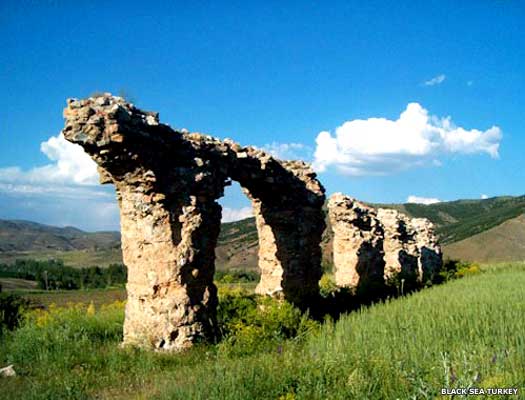 The coast around the Black Sea was claimed as the original homeland of the Sicambri Franks by later, medieval authors, further obscuring an already legendary origin in Scandinavia The coast around the Black Sea was claimed as the original homeland of the Sicambri Franks by later, medieval authors, further obscuring an already legendary origin in Scandinavia |
|
| The recent assassination of Tasgetius of the Carnutes raises the fear that the tribe will revolt. Lucius Plancus takes a legion to winter amongst them, but his investigations into the murder are interrupted. Although the situation is calmed by a swift battlefield victory, Cavarinus of the Senones is condemned to death by his people and is forced to flee to the Romans for protection. This serves as a commitment by the tribe to oppose Julius Caesar during his Gallic campaigns. The act seems to rally support from amongst most of the Gauls, except the Aeduii and Remi who remain loyal to Rome. No further action is taken against the Romans in this year. |
|
|
| 53 BC |
Having left a strong guard with the Treveri following the conclusion of their revolt, Caesar again crosses the Rhine to deal with their German supporters. Then he enters the country of the Eburones, forcing the rebellious Ambiorix to flee, while his co-ruler, Cativolcus, commits suicide by poisoning. Despite this apparent capitulation, the country of the Eburones proves difficult for the Romans, so Caesar burns every village and building, drives off all the cattle, and confiscates all of the tribe's grain. Once the situation has calmed, Caesar is able to settle his men into winter quarters. 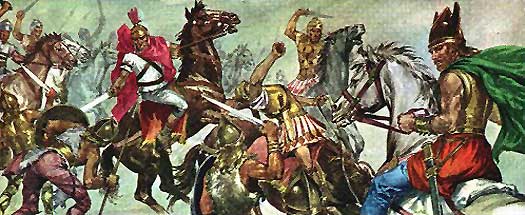 Organising the various tribes of Gaul into a unified resistance took some doing, but Vercingetorix of the Arverni appears to have held a level of authority which made him a leader not to be refused, and thousands of warriors flocked to join him Organising the various tribes of Gaul into a unified resistance took some doing, but Vercingetorix of the Arverni appears to have held a level of authority which made him a leader not to be refused, and thousands of warriors flocked to join him |
|
| However, greater events are afoot. On 13 February 53 BC the disaffectedCarnutes had massacred every Roman merchant who had been present in the town of Cenabum, as well as killing one of Caesar's commissariat officers. This is the spark which ignites a massed Gaulish rebellion. While Julius Caesar has been occupied in the lands of the Belgae, Vercingetorix has renewed the Arverni subjugation of the Aeduii. He has also restored the reputation of Arverni greatness by leading the revolt which is building against Rome. In the same year, Rome suffers one of the worst defeats in its history when Triumvir Marcus Licinius Crassus leads an army to annihilation against the Parthians at Carrhae ( Harran). He dies shortly afterwards. Subsequent legend says that a small band of Roman prisoners wander through the desert and are eventually rounded up by the [ Han](../KingListsFarEast/ChinaNewDynasties01.htm#Han Dynasty) military seventeen years later (36 BC). |
|
|
| 52 BC |
While Caesar is tied down in Rome, the Gauls begin their revolt, resolving to die in freedom rather than be suppressed by the invaders. A scorched earth policy is adopted, and more than twenty towns of the Bituriges are burned in one day. However, Caesar secures all the supplies he needs when he besieges and storms the Bituriges capital at Avaricum, despite a formidable Gaulish defence. From there, the two sides gravitate towards an eventual confrontation at Gergovia, a town of the recently resettled Boii. Caesar loses the siege there after having to split his forces to face an unexpected Gaulish threat from his rear, a rare defeat for him in Gaul. 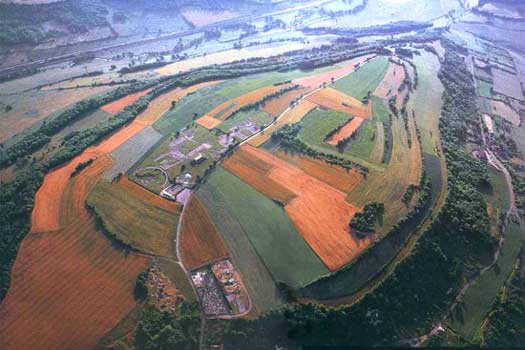 The site of Alesia, a major fort belonging to the Mandubii tribe of Celts, was the scene of the final desperate stand-off between Rome and the Gauls in 52 BC The site of Alesia, a major fort belonging to the Mandubii tribe of Celts, was the scene of the final desperate stand-off between Rome and the Gauls in 52 BC |
|
| Vercingetorix withdraws in good order to Alesia, a major fort belonging to the Mandubii which Caesar soon besieges. Four relief forces are assembled in the territory of the Aeduii by the council of the Gaulish nobility. Together they attempt to relieve Vercingetorix, but the combined relief force is soundly repulsed by Julius Caesar's remarkable strategy of simultaneously conducting a siege on one front whilst being besieged on the other. Marcus Antonius (Marc Antony) and Caius Trebonius marshal the troops for the rearward defence. Seeing that all is lost, Vercingetorix surrenders to Caesar. The garrison is taken prisoner, as are the survivors from the relief army. Vercingetorix is imprisoned in the Tullianum in Rome for five years and Gaul falls to the republic. |
|
|
| 49 - 46 BC |
In the same year that the peoples of Gallia Transalpina are granted Roman citizenship (including the Cenomani and Adriatic Veneti), civil war erupts between Julius Caesar and Pompey as the former crosses the Rubicon. Rome's various allies and subject peoples take sides, including the Getae who side with Pompey. Defeated at the Battle of Pharsalus in 48 BC, Pompey flees to Cleopatra VII, daughter of his late ally in Egypt. Ptolemy XIII has him executed. 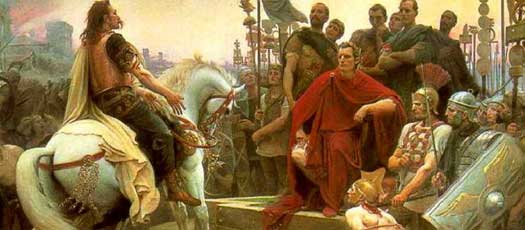 Having surrendered with honour to Caesar in 52 BC, Vercingetorix remained a potent symbol of resistance to Roman domination, so his murder in 46 BC dealt a terminal blow to hopes of renewed Gaulish freedom Having surrendered with honour to Caesar in 52 BC, Vercingetorix remained a potent symbol of resistance to Roman domination, so his murder in 46 BC dealt a terminal blow to hopes of renewed Gaulish freedom |
|
| Again in the same year, Pharnaces of Pontus takes the opportunity to occupy additional territory in Anatolia, and also the first conflict takes place between Rome and the Garamantes when the latter join the Numidian king, Juba I. Juba's army defeats the Roman commander Curio in 49 BC, but a retaliatory strike by Caesar in 46 BC defeats the Garamantes in turn. Caesar also wins the civil war at the Battle of Thapsus in 46 BC, and is appointed dictator of Rome for ten years. The surviving Pompeians, including Cato the Younger, flee toUtica. One of Caesar's first projects is the building of Colonia Junonia on the site of ancient Carthage. By about 40 BC it becomes the capital of the Roman province of Africa Proconsularis. In 46 BC he also refounds the city ofCorinth and murders Vercingetorix, former high king of the Gauls. |
|
|
| 49 - 44 BC |
Gaius Julius Caesar |
Dictator. Assassinated. |
| 45 BC |
Caesar is appointed dictator of Rome for life, much to the consternation of many members of the Senate who see his increasing authority as a bid for kingship of Rome, something which most Romans would abhor. |
|
| 44 BC |
Julius Caesar is assassinated on the Ides of March in a conspiracy led by Cassius and Brutus. Afterwards, Caesar's consular colleague, Marc Antony, passes a 'lex Antonia' which abolishes the dictatorate and expunges it from the constitutions of the republic. When Caesar's great-nephew and adopted son, Octavian, returns to Rome, the two rivals share an uneasy peace as they jostle for political superiority and influence. 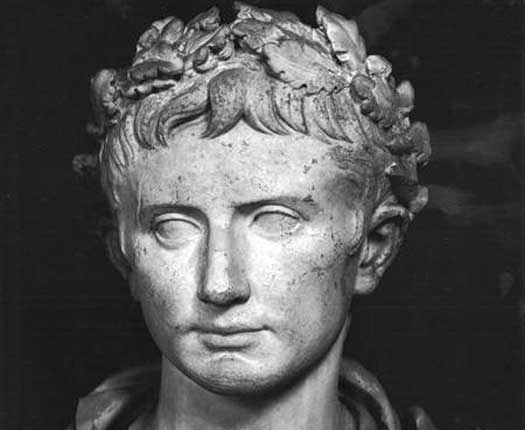 During his long 'reign' as Rome's first citizen, Octavian brought peace to the city and oversaw its transition from failing republic to vigorous and expanding empire During his long 'reign' as Rome's first citizen, Octavian brought peace to the city and oversaw its transition from failing republic to vigorous and expanding empire |
|
| 43 BC |
Many senators are opposed to Marc Antony's hold on power. Octavian is granted the status of senator, despite not yet being twenty. Cicero leads the Senate to dispatch Octavian to attack Marc Anthony in northern Italy, and the young general wins victory at Mutina. The two reigning consuls are among the casualties, so Octavian subsequently marches on Rome and forces the Senate to accept him as consul. Three months after that, he meets Antony and General Marcus Lepidus at Bologna and on 27 November they come to a power-sharing agreement known as the Triumvirate (Lepidus is definitely the lesser of the three in terms of power, and is soon brushed aside). This completely cuts off the Senate from power, hastening the transition from republic to empire. |
|
| 43 - 31 BC |
Octavian, Antony, & Lepidus |
Members of the second triumvirate. |
| 42 BC |
During his reign, Raskouporis of Sapes has already granted assistance both to Pompey and Caesar during their struggle for power. Now, immediately after the murder of Julius Caesar, he supports Brutus and Cassius against Marc Antony and Octavian. In return, Brutus and Cassius lead campaigns against the tribal Bessoi in the Thracian highlands in defence of their allies. 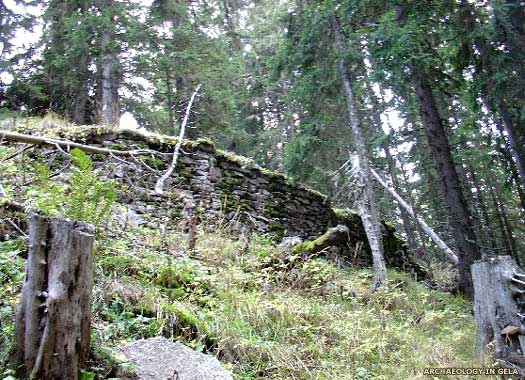 The fortress at Gradishte was Thracian, seemingly lying at the heart of the Bessoi territory in Rhodopi Mountains and the northern foothill mountain plain on the upper and middle streams of the River Maritsa The fortress at Gradishte was Thracian, seemingly lying at the heart of the Bessoi territory in Rhodopi Mountains and the northern foothill mountain plain on the upper and middle streams of the River Maritsa |
|
| 32 - 31 BC |
The agreement regulating the Triumvirate has expired, and in the political manoeuvring which follows Octavian gains and reads out Antony's will in public. It shows that his heart belongs to Cleopatra and Egypt, thereby making it clear to most Romans that Antony could never be one of them. The Senate declares war, and Octavian and Antony clash on 2 September 31 BC at the naval Battle of Actium, off the western coast of Greece. Antony is defeated as Cleopatra departs with the surviving fleet and he commits suicide. Octavian's next act is to put to death Cleopatra's son Caesarion. |
|
| 31 - 27 BC |
Gaius Octavius / Octavian Caesar |
In sole control of Rome. |
| 31 - 30 BC |
With Octavian's defeat of Antony at Actium and no other opponents to his hold on power, Egypt and Libya become provinces of Rome upon the death of Cleopatra in the following year. Octavian also recognises the authority of the turncoat Polemon I of the Bosporan kingdom, Cilicia, [Kolkis](EasternGeorgia.htm#Kingdom of Egrisi), and Pontus. 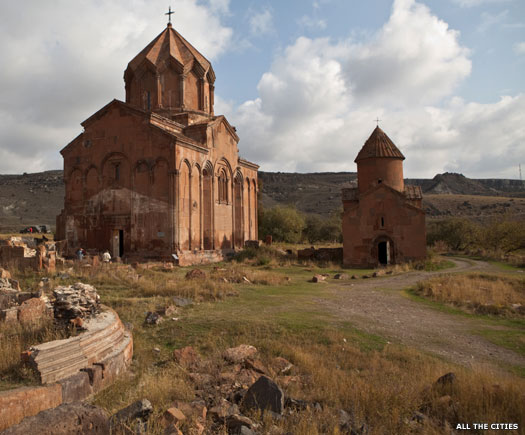 Amasia now falls within the western border of Armenia but in the late fourth century BC it was part of the Persian satrapy of Pontus, now governed by Greeks or by Greek allies of Persian heritage Amasia now falls within the western border of Armenia but in the late fourth century BC it was part of the Persian satrapy of Pontus, now governed by Greeks or by Greek allies of Persian heritage |
|
| 27 BC |
The office of dictator is offered to Caesar Augustus (Octavian), who wisely declines it. He opts instead for the power of a tribune and consular imperium without holding any office other than that of Pontifex Maximus and Princeps Senatus - a politic arrangement which leaves him as functional dictator without having to hold the controversial title or office itself. The Roman Empire is born. |
|
 |
|
|


 Early Etruscan civilisation was heavily influenced by the Phoenicians and Greeks and, in turn, it influenced early Roman (Latin) culture
Early Etruscan civilisation was heavily influenced by the Phoenicians and Greeks and, in turn, it influenced early Roman (Latin) culture An Etruscan sarcophagus of a man and his wife from the city of Caisra (modern Cerveteri), which was one of the older cities, having been formed in the late ninth century BC by a melding together of clusters of Villanovan villages
An Etruscan sarcophagus of a man and his wife from the city of Caisra (modern Cerveteri), which was one of the older cities, having been formed in the late ninth century BC by a melding together of clusters of Villanovan villages A romantic view of the ruins of Alba Longa, following its destruction by Rome under Tullus Hostilius in the seventh century BC
A romantic view of the ruins of Alba Longa, following its destruction by Rome under Tullus Hostilius in the seventh century BC This second century AD relief in Rome depicts Aeneas landing in Latium, although such a migration myth was a much later addition to the history of the Latins than their true migration as Indo-Europeans
This second century AD relief in Rome depicts Aeneas landing in Latium, although such a migration myth was a much later addition to the history of the Latins than their true migration as Indo-Europeans The Sabini (Hernici) settlement of Reate (modern Rieti) was founded by the Sabini and prospered under Roman control to survive into the modern age
The Sabini (Hernici) settlement of Reate (modern Rieti) was founded by the Sabini and prospered under Roman control to survive into the modern age Rome's republic was usually headed by two consuls and the Senate, but on a very few occasions the post was replaced, usually by military appointments
Rome's republic was usually headed by two consuls and the Senate, but on a very few occasions the post was replaced, usually by military appointments The ancient River Liris (now divided into the Liri and the Gari) along its upper length was an early home to the Volsci, and later formed Rome's border with the Samnites
The ancient River Liris (now divided into the Liri and the Gari) along its upper length was an early home to the Volsci, and later formed Rome's border with the Samnites Dictator Marcus Furius Camillus may have been instrumental in persuading Brennus and his Gauls to leave Rome following its sacking in 389 BC, as painted around 1716-1720
Dictator Marcus Furius Camillus may have been instrumental in persuading Brennus and his Gauls to leave Rome following its sacking in 389 BC, as painted around 1716-1720 The origins of the Euganei, Ligurians, Raeti, Veneti, and Vindelici are confused and unclear, but in the last half of the first millennium BC they were gradually being Celticised or were combining multiple influences to create hybrid tribes (click or tap on map to view full sized)
The origins of the Euganei, Ligurians, Raeti, Veneti, and Vindelici are confused and unclear, but in the last half of the first millennium BC they were gradually being Celticised or were combining multiple influences to create hybrid tribes (click or tap on map to view full sized) The orange area shows the general territory under the control of the Samnites, while the location of each of their divisions, along with the Frentani, is shown within that territory (click or tap on map to view full sized)
The orange area shows the general territory under the control of the Samnites, while the location of each of their divisions, along with the Frentani, is shown within that territory (click or tap on map to view full sized) The Roman city of Teanum, modern Teano, thrived during the late Roman republic and empire periods after being founded as the main centre of the Sidicini tribe
The Roman city of Teanum, modern Teano, thrived during the late Roman republic and empire periods after being founded as the main centre of the Sidicini tribe The Opici probably dominated much of Campania to start with, but were pushed out of the eastern parts by the Samnites, dominated themselves by the Etruscans, and then defeated by Rome
The Opici probably dominated much of Campania to start with, but were pushed out of the eastern parts by the Samnites, dominated themselves by the Etruscans, and then defeated by Rome Modern Naples lies beneath the slumbering volcano of Vesuvius, one of a long line of settlements there which have risked an eruption and which have sometimes been destroyed by one
Modern Naples lies beneath the slumbering volcano of Vesuvius, one of a long line of settlements there which have risked an eruption and which have sometimes been destroyed by one The mountainous landscape of all but coastal Epirus required a hardy inhabitant, and the region's remoteness may have had a bearing on its poorly recorded history in the ancient world
The mountainous landscape of all but coastal Epirus required a hardy inhabitant, and the region's remoteness may have had a bearing on its poorly recorded history in the ancient world The Arch of Trajan, built in AD 114 by the Senate and people of Rome, marked the entrance of the Via Traiana into the city of Beneventum (Benavento)
The Arch of Trajan, built in AD 114 by the Senate and people of Rome, marked the entrance of the Via Traiana into the city of Beneventum (Benavento) Roman military tactics may have owed something to the Samnites, with this efficient and seasoned warrior force matching the Romans and bettering them in the fourth century BC
Roman military tactics may have owed something to the Samnites, with this efficient and seasoned warrior force matching the Romans and bettering them in the fourth century BC The territory which had been settled by the Umbri was focussed along a stretch of the mountainous Apennines which form a spine down the middle of Italy
The territory which had been settled by the Umbri was focussed along a stretch of the mountainous Apennines which form a spine down the middle of Italy This Etruscan villa was excavated at the town of Vetluna (near modern Grosseto in Tuscany), and seems to have belonged to a wealthy family at a time of peace with Rome, in the third century BC
This Etruscan villa was excavated at the town of Vetluna (near modern Grosseto in Tuscany), and seems to have belonged to a wealthy family at a time of peace with Rome, in the third century BC An Iron Age Celtic prince lay buried with his chariot at the centre of this huge mound in the Champagne region of France, according to the country's National Archaeological Research Institute
An Iron Age Celtic prince lay buried with his chariot at the centre of this huge mound in the Champagne region of France, according to the country's National Archaeological Research Institute The Novilara Stele, the only one of four which can be attested fully by modern archaeology, remains a mystery, its language still undeciphered
The Novilara Stele, the only one of four which can be attested fully by modern archaeology, remains a mystery, its language still undeciphered Numerius prepares his Samnites to face Rome at the Battle of Bovianum in 272 BC, close to the Pentri capital of the same name
Numerius prepares his Samnites to face Rome at the Battle of Bovianum in 272 BC, close to the Pentri capital of the same name The settlement of Gnapia near the modern town of Fasano in Apulia, southern Italy, became an important border town under the Messapii, with their Peucetii neighbours to the north
The settlement of Gnapia near the modern town of Fasano in Apulia, southern Italy, became an important border town under the Messapii, with their Peucetii neighbours to the north The city of Carthage existed in its original glory for at least four hundred and twenty-eight years before it was destroyed by the Romans - and possibly another two centuries before that as a developing colony which was founded by Phoenicians
The city of Carthage existed in its original glory for at least four hundred and twenty-eight years before it was destroyed by the Romans - and possibly another two centuries before that as a developing colony which was founded by Phoenicians While most of the Gauls of the third century BC fought fully clothed, their Gaesatae mercenaries tended to fight with nothing more than their weapons, and not even the trousers shown here
While most of the Gauls of the third century BC fought fully clothed, their Gaesatae mercenaries tended to fight with nothing more than their weapons, and not even the trousers shown here The landscape of Bohemia (main homeland of the Boii) is and was defined by wooded mountainsides and extensive farming land - a green and fertile area at the centre of Europe
The landscape of Bohemia (main homeland of the Boii) is and was defined by wooded mountainsides and extensive farming land - a green and fertile area at the centre of Europe Early Dauni pottery developed a style which was mostly its own, generally using geometric shapes, although the example shown here is a plain one, albeit still simplistically attractive
Early Dauni pottery developed a style which was mostly its own, generally using geometric shapes, although the example shown here is a plain one, albeit still simplistically attractive Ecbatana was the capital of Media, a prized possession of the Seleucid empire and one which had to be regained upon the event of a revolt - this view shows the surviving ancient walls in modern Hamadan in Iran
Ecbatana was the capital of Media, a prized possession of the Seleucid empire and one which had to be regained upon the event of a revolt - this view shows the surviving ancient walls in modern Hamadan in Iran The origins of the Euganei, Ligurians, Raeti, Veneti, and Vindelici are confused and unclear, but in the last half of the first millennium BC they were gradually being Celticised or were combining multiple influences to create hybrid tribes (click or tap on map to view full sized)
The origins of the Euganei, Ligurians, Raeti, Veneti, and Vindelici are confused and unclear, but in the last half of the first millennium BC they were gradually being Celticised or were combining multiple influences to create hybrid tribes (click or tap on map to view full sized) The Roman Forum at modern Stobi is now in North Macedonia (known for some time as the Former Yugoslav Republic of Macedonia (FYROM))
The Roman Forum at modern Stobi is now in North Macedonia (known for some time as the Former Yugoslav Republic of Macedonia (FYROM)) Pictured here are both sides of a Roman silver dinarius from the official mint, dated to around 146 BC - the mounted attacker on the reverse accompanied by his dog is fairly typical as Roman troops would often bring their mastiffs along with them so that, while the soldier was fighting the enemy above with spear and long knife, their dogs would be biting the enemy's legs from below
Pictured here are both sides of a Roman silver dinarius from the official mint, dated to around 146 BC - the mounted attacker on the reverse accompanied by his dog is fairly typical as Roman troops would often bring their mastiffs along with them so that, while the soldier was fighting the enemy above with spear and long knife, their dogs would be biting the enemy's legs from below The Rhodanus (the modern River Rhône) formed the western border of the territory which belonged to the Salyes confederation by the time the Romans were able to note their existence
The Rhodanus (the modern River Rhône) formed the western border of the territory which belonged to the Salyes confederation by the time the Romans were able to note their existence In 105 BC a huge Roman army is destroyed at the Battle of Arausio. Consul Gaius Marius rebuilds the Roman forces, also employing numbers of Iberian Mercenaries (see feature link) and, while the Cimbri raid Iberia, in 102 BC the weakened Teutones are defeated and enslaved. The Cimbri are similarly destroyed at the Battle of Vercellae in 101 BC (potentially the home of the Libici Gauls).
In 105 BC a huge Roman army is destroyed at the Battle of Arausio. Consul Gaius Marius rebuilds the Roman forces, also employing numbers of Iberian Mercenaries (see feature link) and, while the Cimbri raid Iberia, in 102 BC the weakened Teutones are defeated and enslaved. The Cimbri are similarly destroyed at the Battle of Vercellae in 101 BC (potentially the home of the Libici Gauls). An illustration depicting the Teutones wandering in Gaul, part of a large-scale migration from modern Denmark into northern Italy in the second century BC
An illustration depicting the Teutones wandering in Gaul, part of a large-scale migration from modern Denmark into northern Italy in the second century BC Lucius Cornelius Sulla was the victor in Rome's first full-scale civil war (88-82 BC), after which he became dictator of the Roman republic, thereby laying out a path which others could follow in the same century
Lucius Cornelius Sulla was the victor in Rome's first full-scale civil war (88-82 BC), after which he became dictator of the Roman republic, thereby laying out a path which others could follow in the same century The treasures of the Odrysian kingdom in Thrace would in part have been inherited by the Odrissae
The treasures of the Odrysian kingdom in Thrace would in part have been inherited by the Odrissae The Celtic tribes of the Western Alps were relatively small and fairly fragmented, but they made up for that with a level of belligerence and fighting ability which often stunned their major opponents, including the Romans
The Celtic tribes of the Western Alps were relatively small and fairly fragmented, but they made up for that with a level of belligerence and fighting ability which often stunned their major opponents, including the Romans The Roman troops of Julius Caesar prepare to face the Helvetii and their allies (which probably include some Boii elements) at the Battle of Bibracte in 58 BC, outside the oppidum of the Aeduii tribe
The Roman troops of Julius Caesar prepare to face the Helvetii and their allies (which probably include some Boii elements) at the Battle of Bibracte in 58 BC, outside the oppidum of the Aeduii tribe The Battle of the (River) Axona (the modern Aisne in north-eastern France) witnessed the beginning of the end of the Belgic confederation against Rome
The Battle of the (River) Axona (the modern Aisne in north-eastern France) witnessed the beginning of the end of the Belgic confederation against Rome The region around the Great St Bernard's Pass was a perfect mix of fertile plains and protective high mountains for small but aggressive Celtic tribes in the four centuries or so between their settlement of the area and domination by Rome
The region around the Great St Bernard's Pass was a perfect mix of fertile plains and protective high mountains for small but aggressive Celtic tribes in the four centuries or so between their settlement of the area and domination by Rome The River Vézère in France probably formed one of the territorial borders of the Petrocorii tribe following their arrival in the region
The River Vézère in France probably formed one of the territorial borders of the Petrocorii tribe following their arrival in the region Several other tribes submit to Caesar, but the Sicambri withdraw from their territories. Caesar burns their villages and takes their corn before returning to Gaul. Soon afterwards, he mounts his first expedition to Britain, seemingly determined to go ahead with this 'reconnaissance' despite the lateness of the year.
Several other tribes submit to Caesar, but the Sicambri withdraw from their territories. Caesar burns their villages and takes their corn before returning to Gaul. Soon afterwards, he mounts his first expedition to Britain, seemingly determined to go ahead with this 'reconnaissance' despite the lateness of the year. The coast around the Black Sea was claimed as the original homeland of the Sicambri Franks by later, medieval authors, further obscuring an already legendary origin in Scandinavia
The coast around the Black Sea was claimed as the original homeland of the Sicambri Franks by later, medieval authors, further obscuring an already legendary origin in Scandinavia Organising the various tribes of Gaul into a unified resistance took some doing, but Vercingetorix of the Arverni appears to have held a level of authority which made him a leader not to be refused, and thousands of warriors flocked to join him
Organising the various tribes of Gaul into a unified resistance took some doing, but Vercingetorix of the Arverni appears to have held a level of authority which made him a leader not to be refused, and thousands of warriors flocked to join him The site of Alesia, a major fort belonging to the Mandubii tribe of Celts, was the scene of the final desperate stand-off between Rome and the Gauls in 52 BC
The site of Alesia, a major fort belonging to the Mandubii tribe of Celts, was the scene of the final desperate stand-off between Rome and the Gauls in 52 BC Having surrendered with honour to Caesar in 52 BC, Vercingetorix remained a potent symbol of resistance to Roman domination, so his murder in 46 BC dealt a terminal blow to hopes of renewed Gaulish freedom
Having surrendered with honour to Caesar in 52 BC, Vercingetorix remained a potent symbol of resistance to Roman domination, so his murder in 46 BC dealt a terminal blow to hopes of renewed Gaulish freedom During his long 'reign' as Rome's first citizen, Octavian brought peace to the city and oversaw its transition from failing republic to vigorous and expanding empire
During his long 'reign' as Rome's first citizen, Octavian brought peace to the city and oversaw its transition from failing republic to vigorous and expanding empire The fortress at Gradishte was Thracian, seemingly lying at the heart of the Bessoi territory in Rhodopi Mountains and the northern foothill mountain plain on the upper and middle streams of the River Maritsa
The fortress at Gradishte was Thracian, seemingly lying at the heart of the Bessoi territory in Rhodopi Mountains and the northern foothill mountain plain on the upper and middle streams of the River Maritsa Amasia now falls within the western border of Armenia but in the late fourth century BC it was part of the Persian satrapy of Pontus, now governed by Greeks or by Greek allies of Persian heritage
Amasia now falls within the western border of Armenia but in the late fourth century BC it was part of the Persian satrapy of Pontus, now governed by Greeks or by Greek allies of Persian heritage